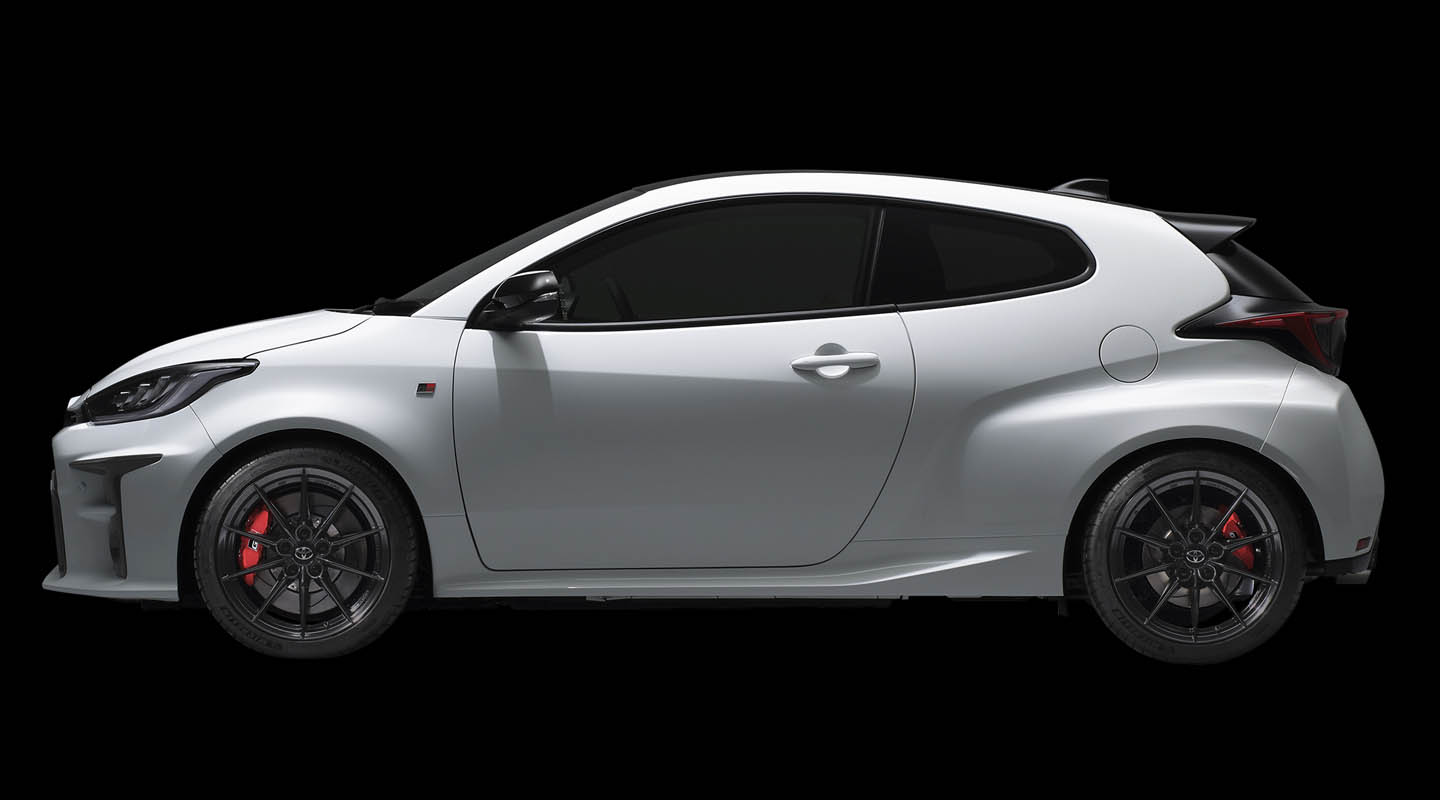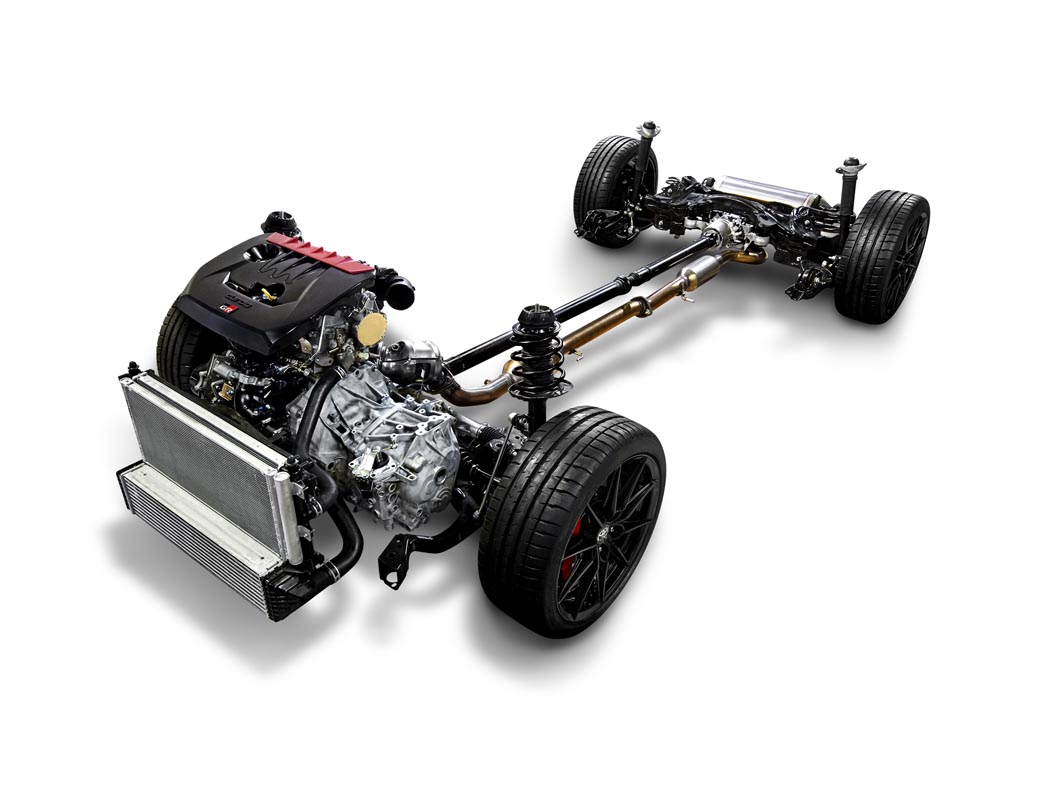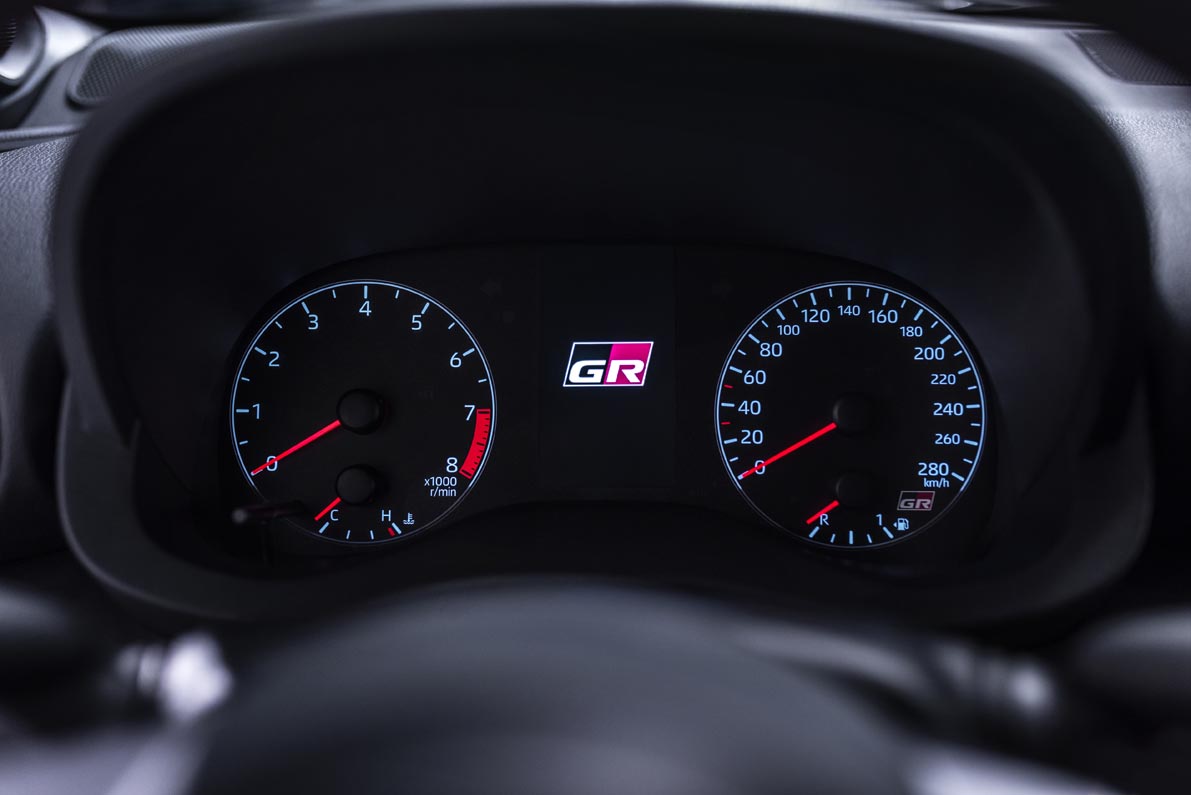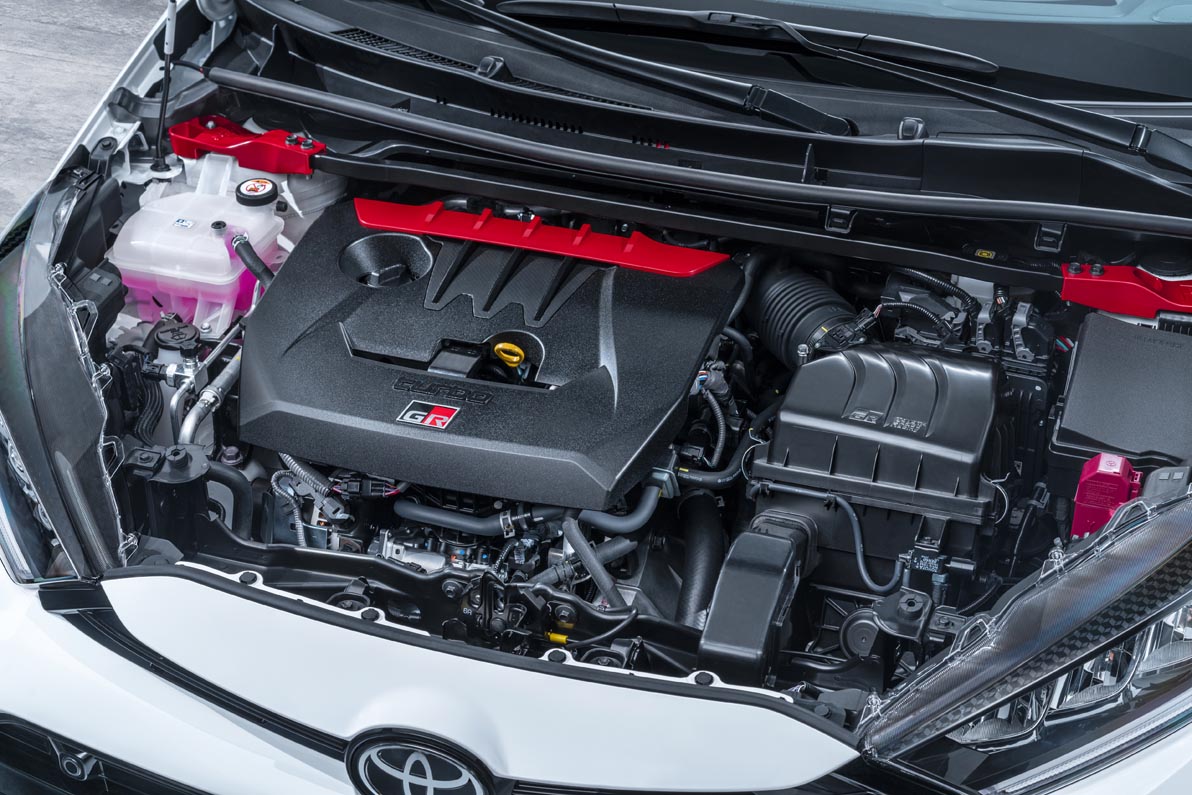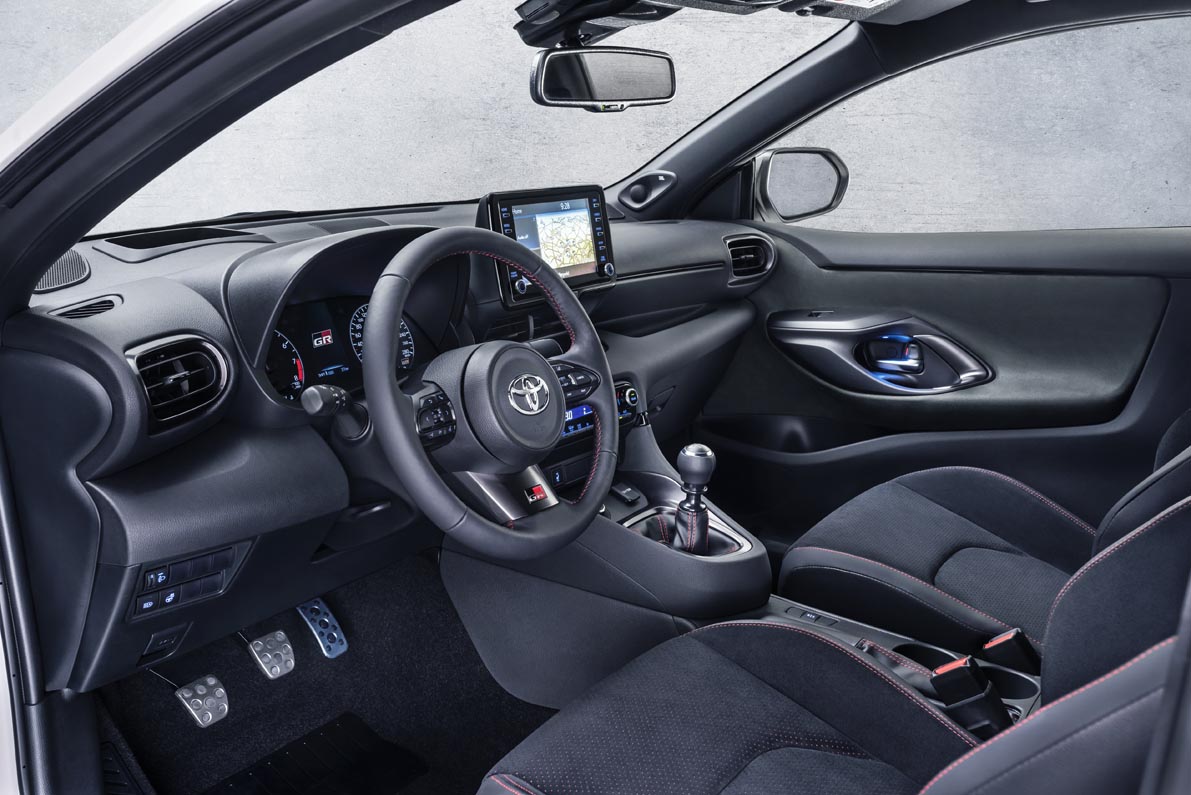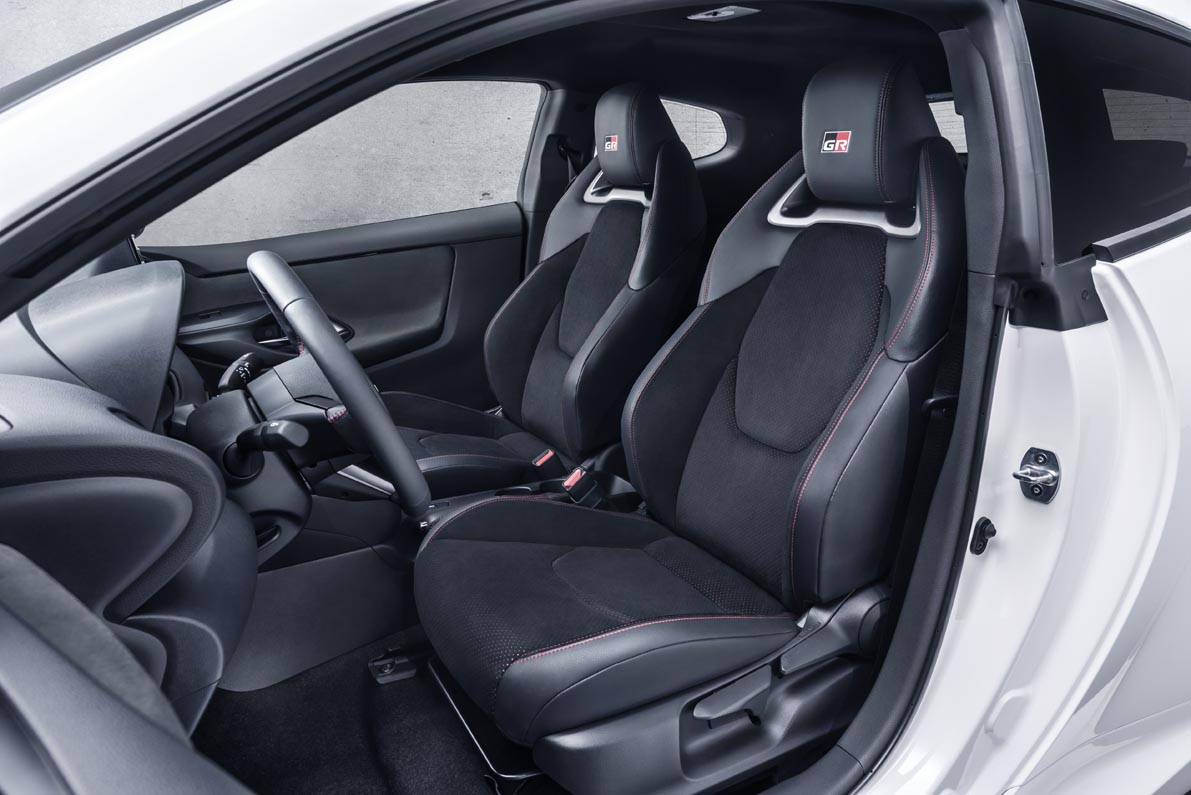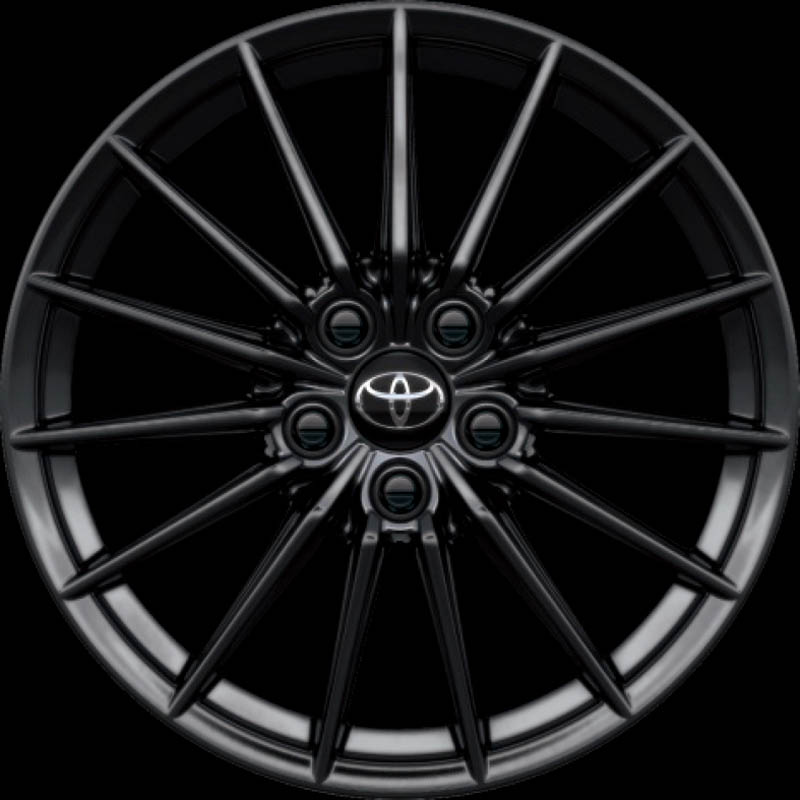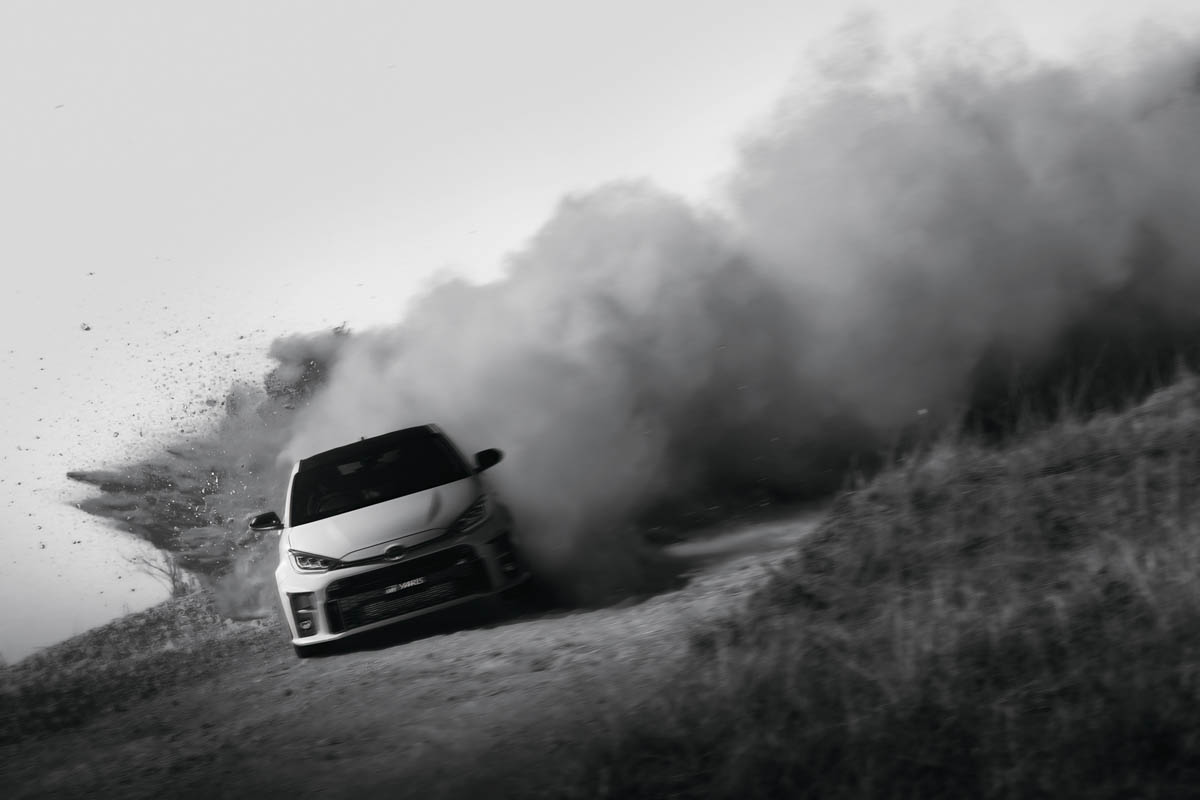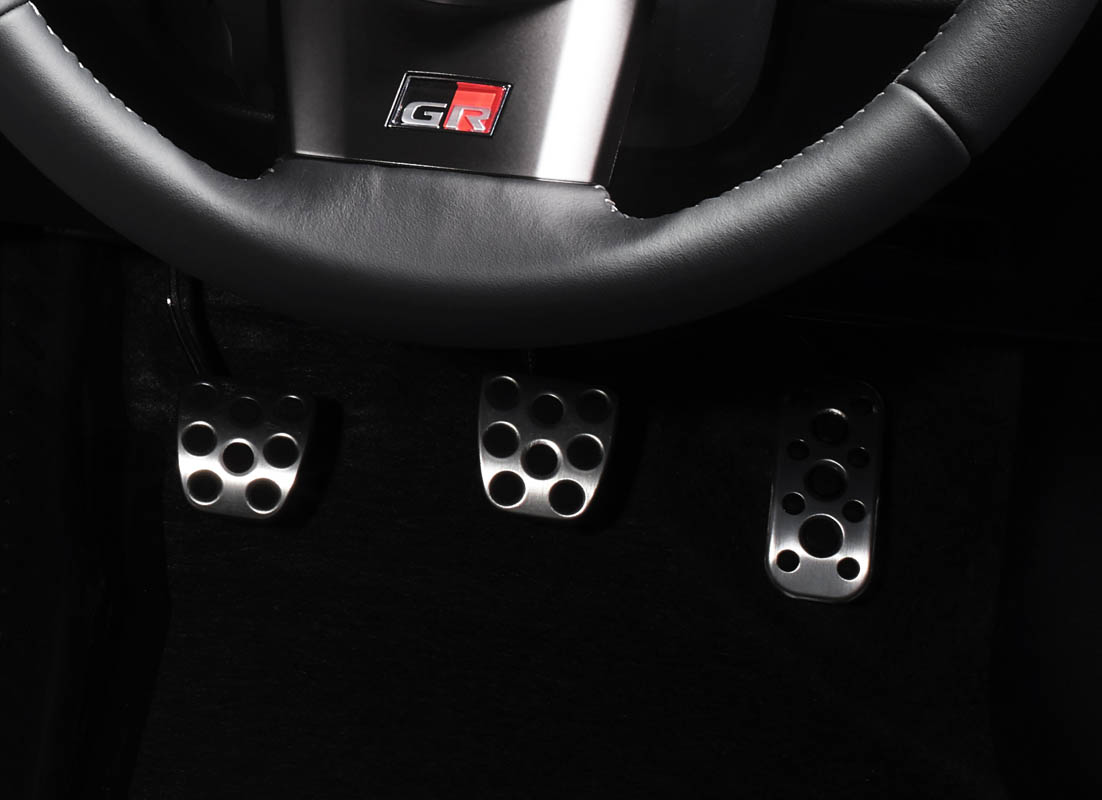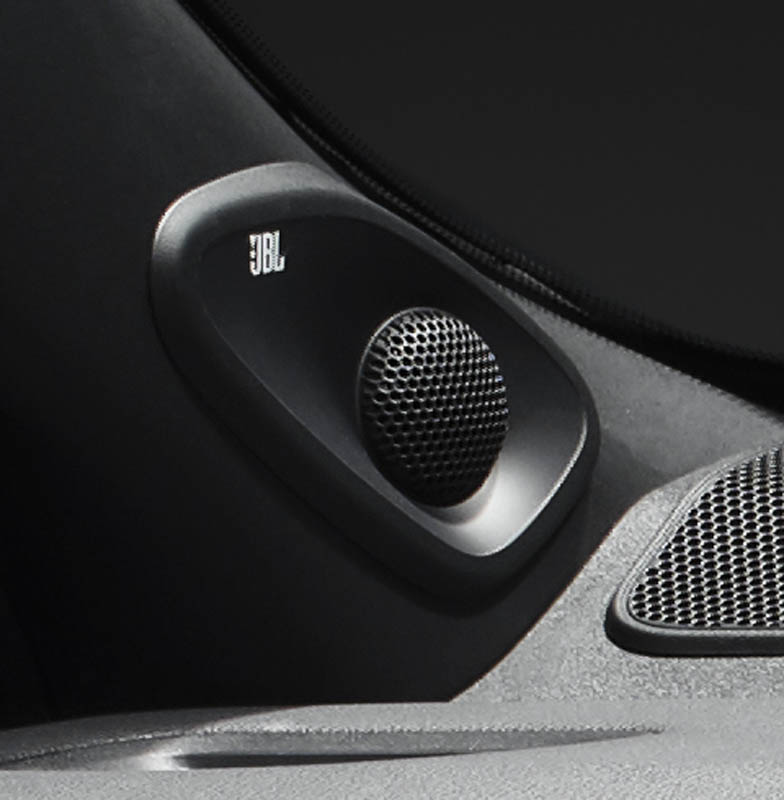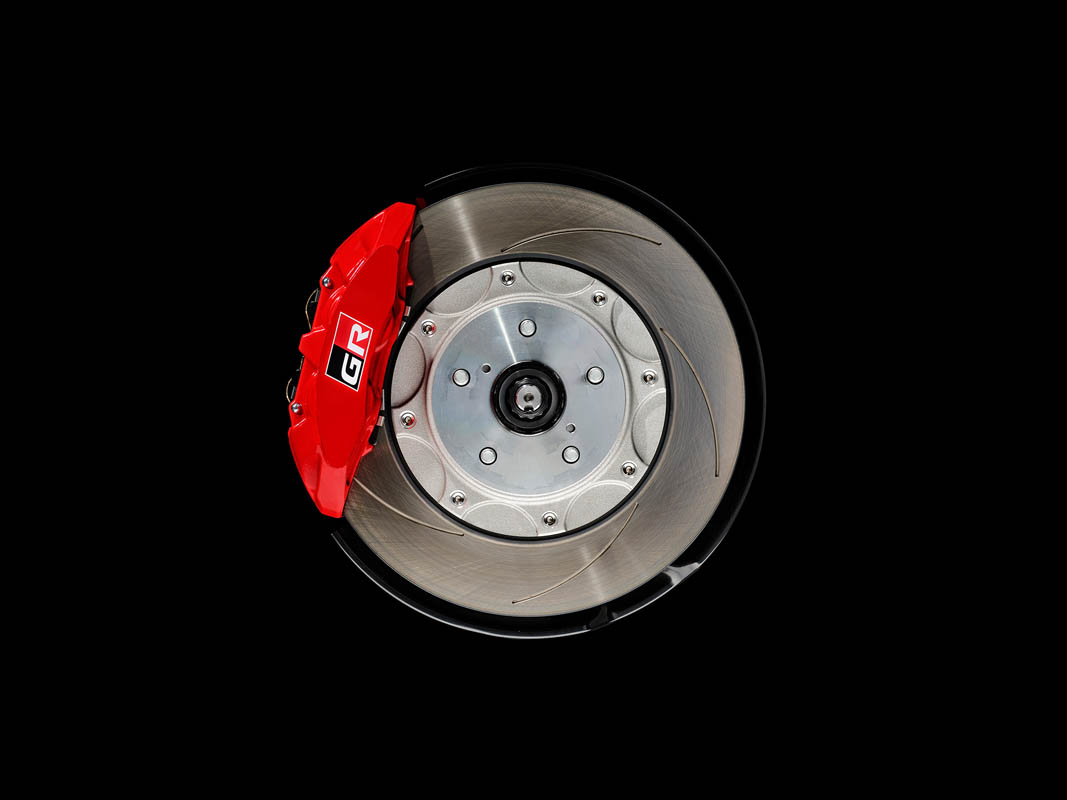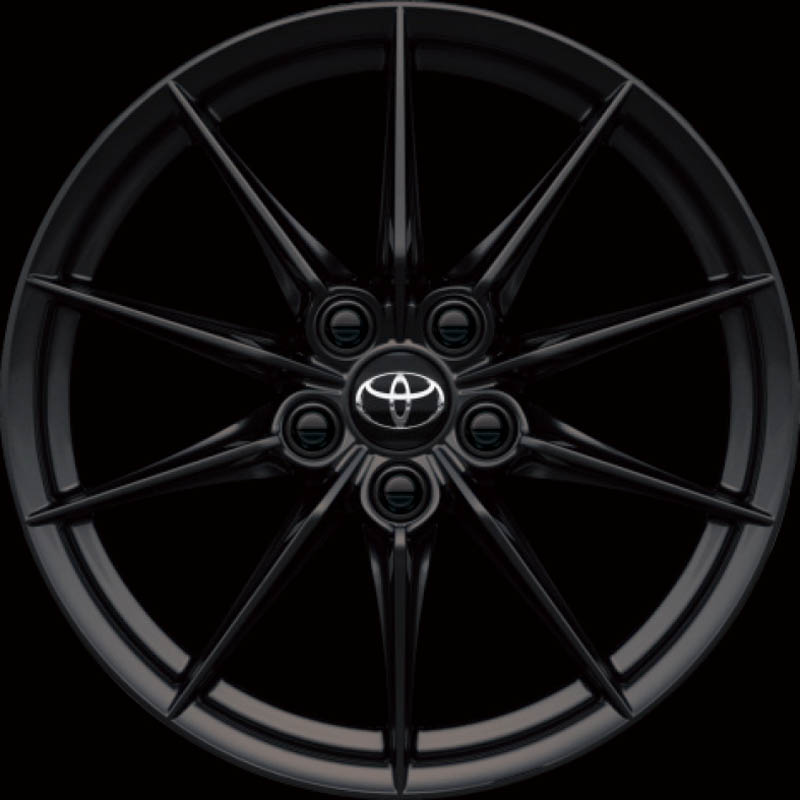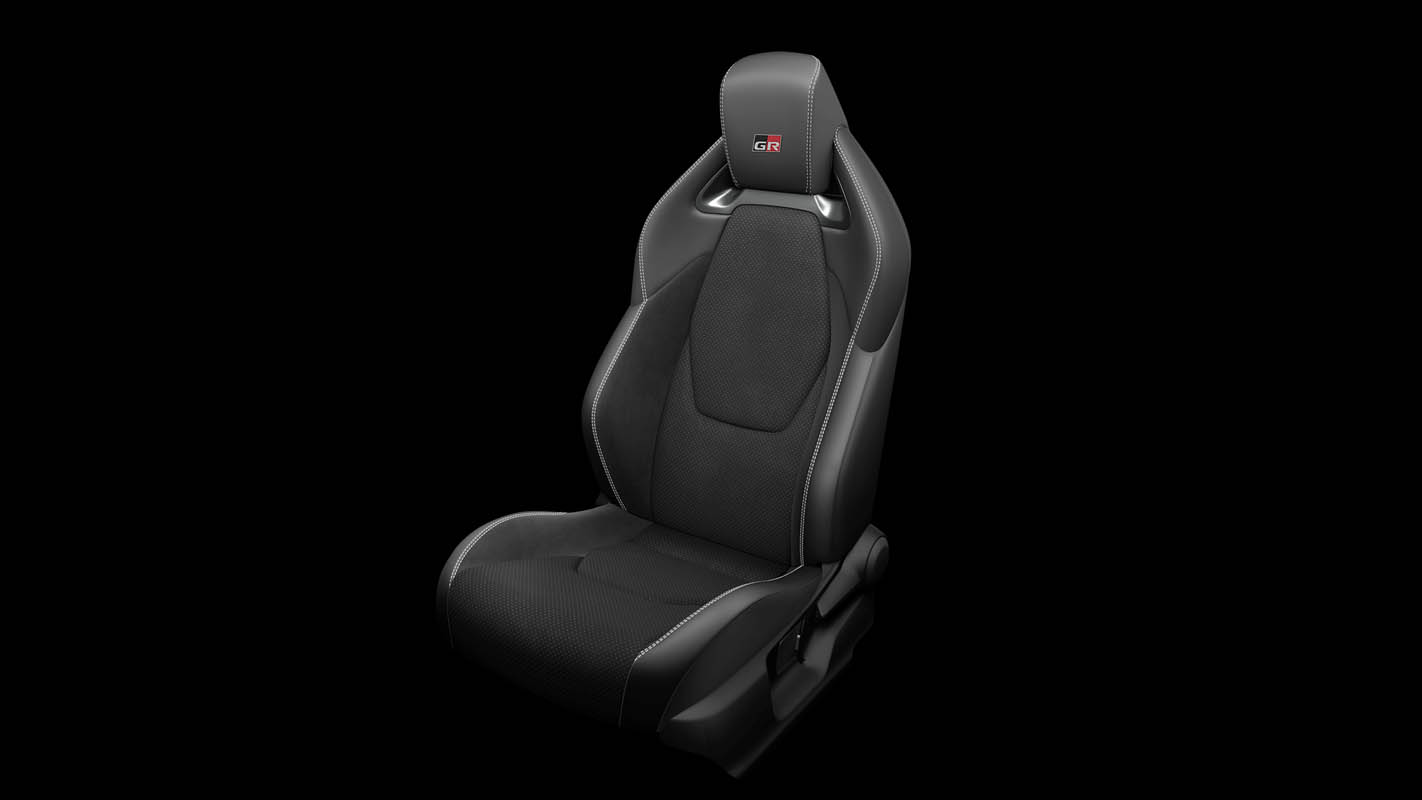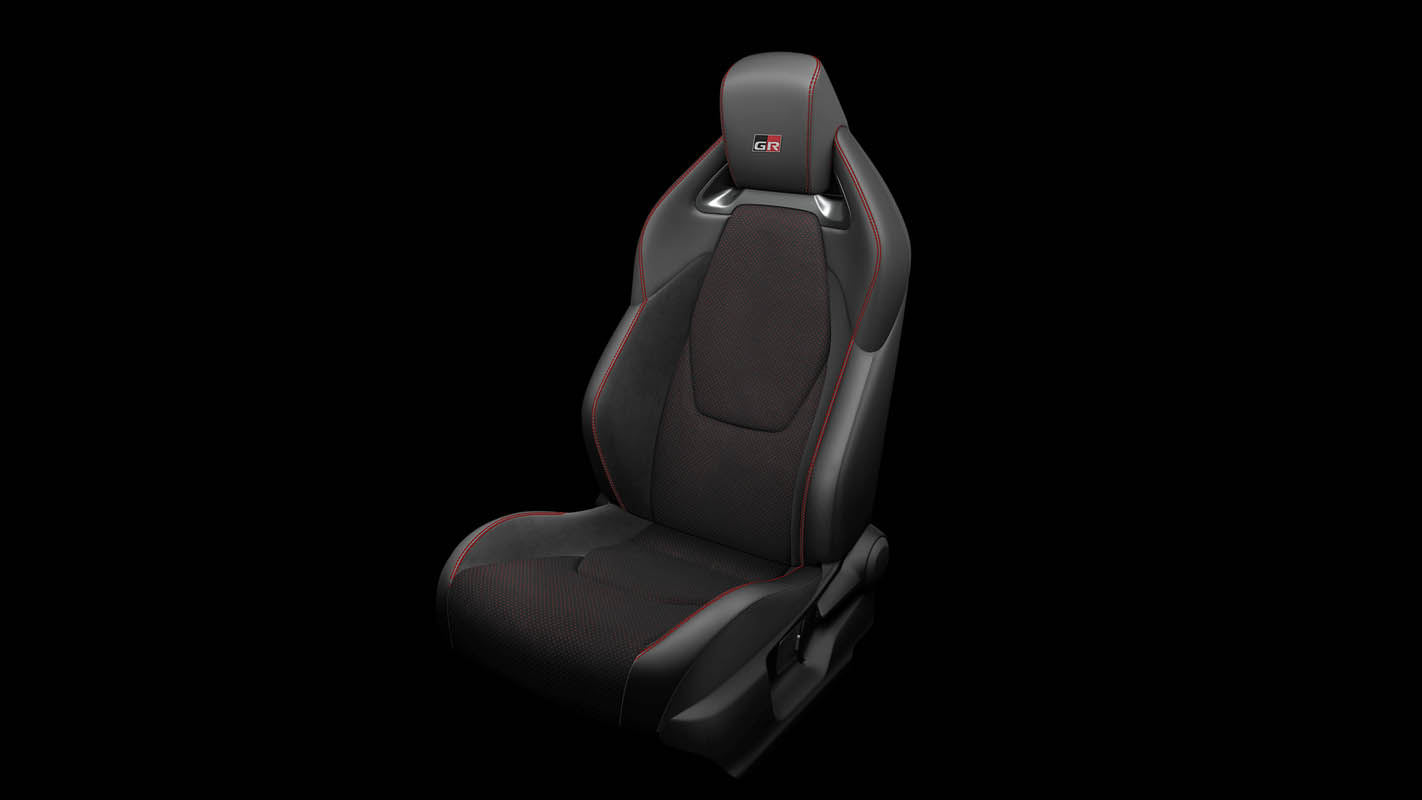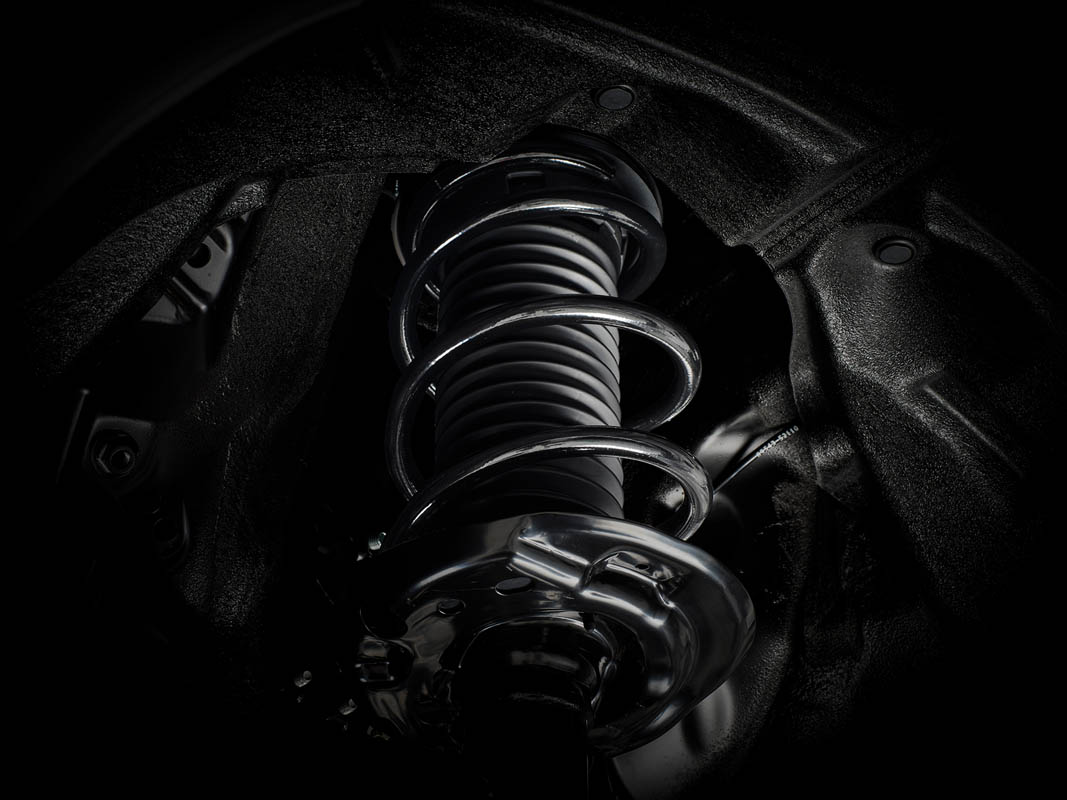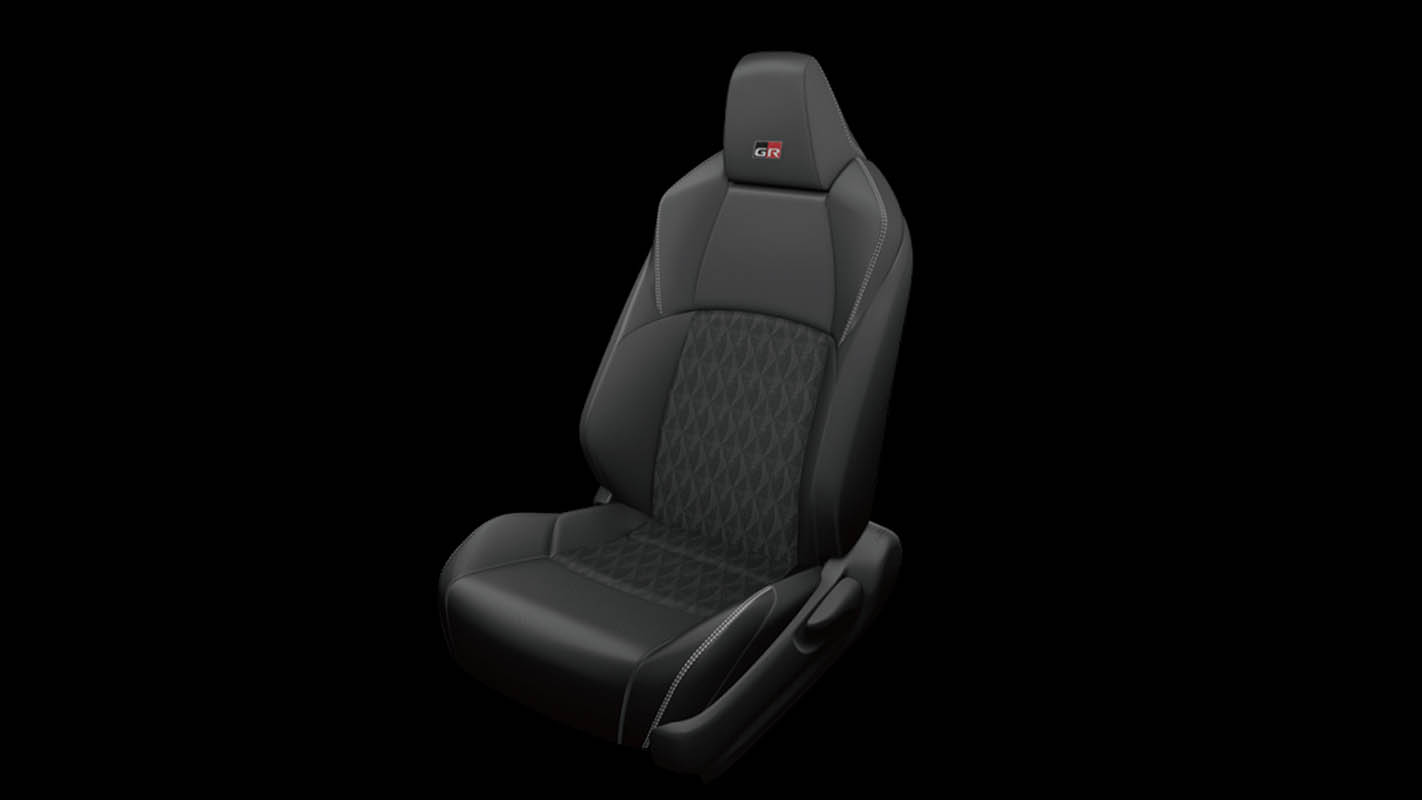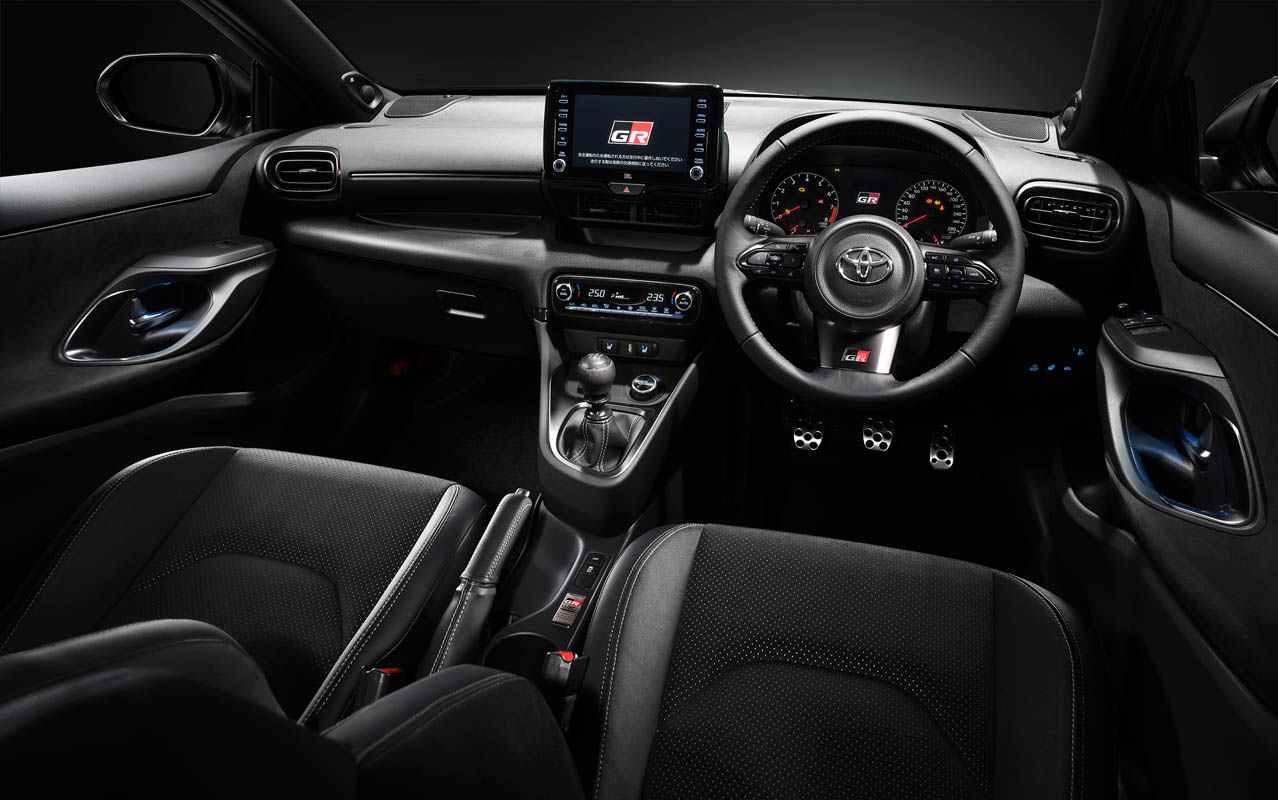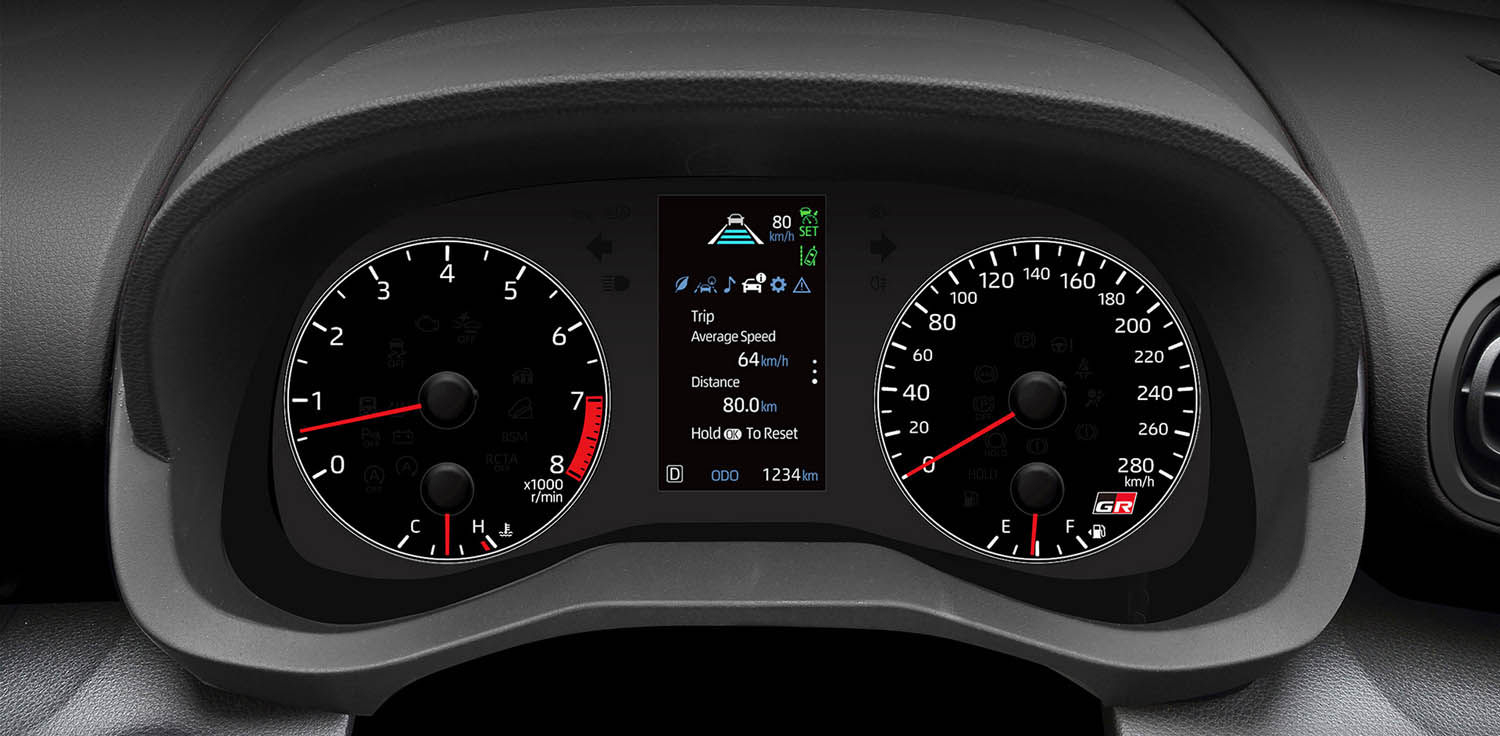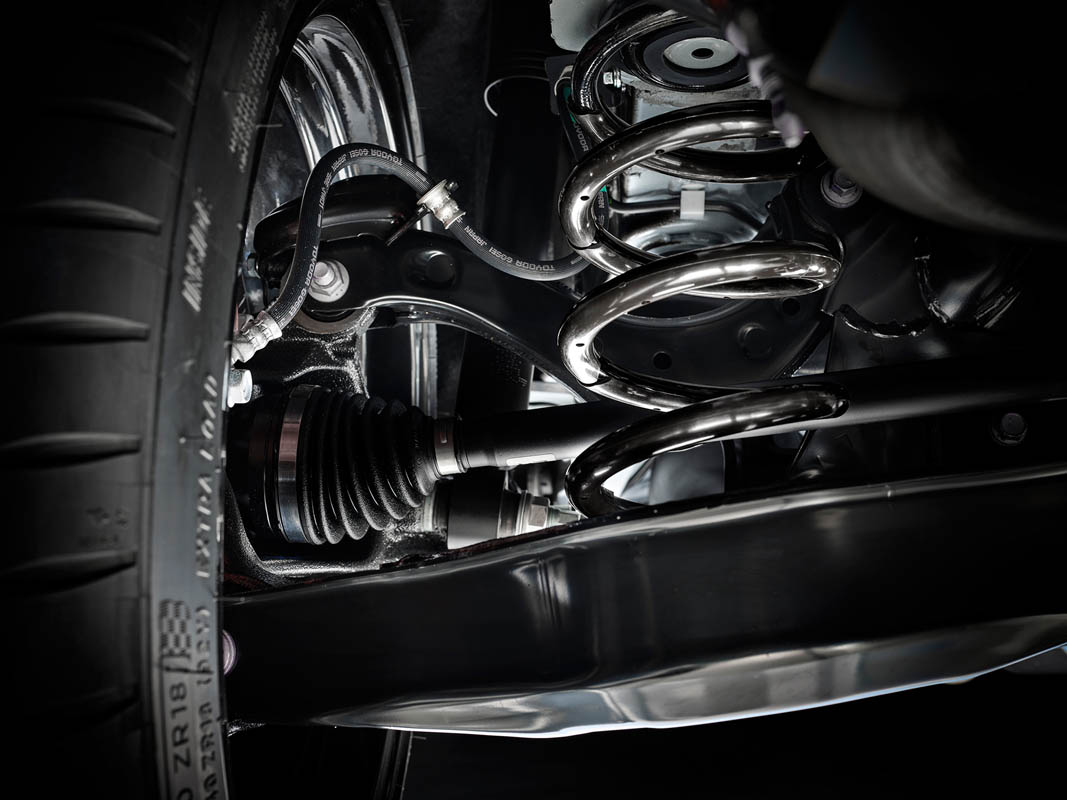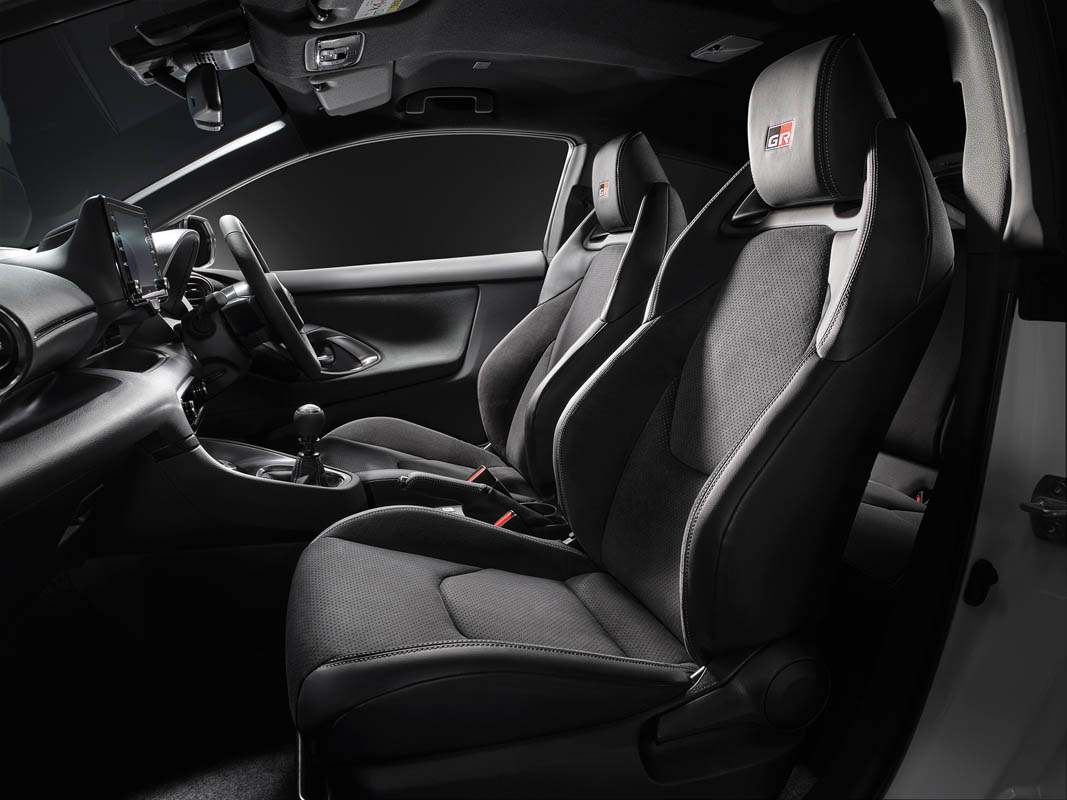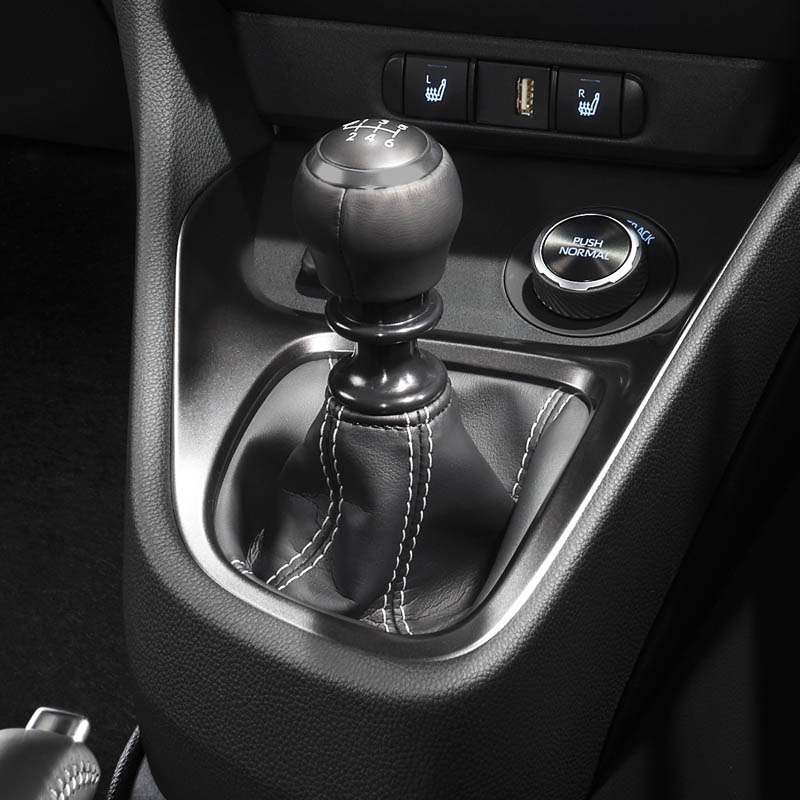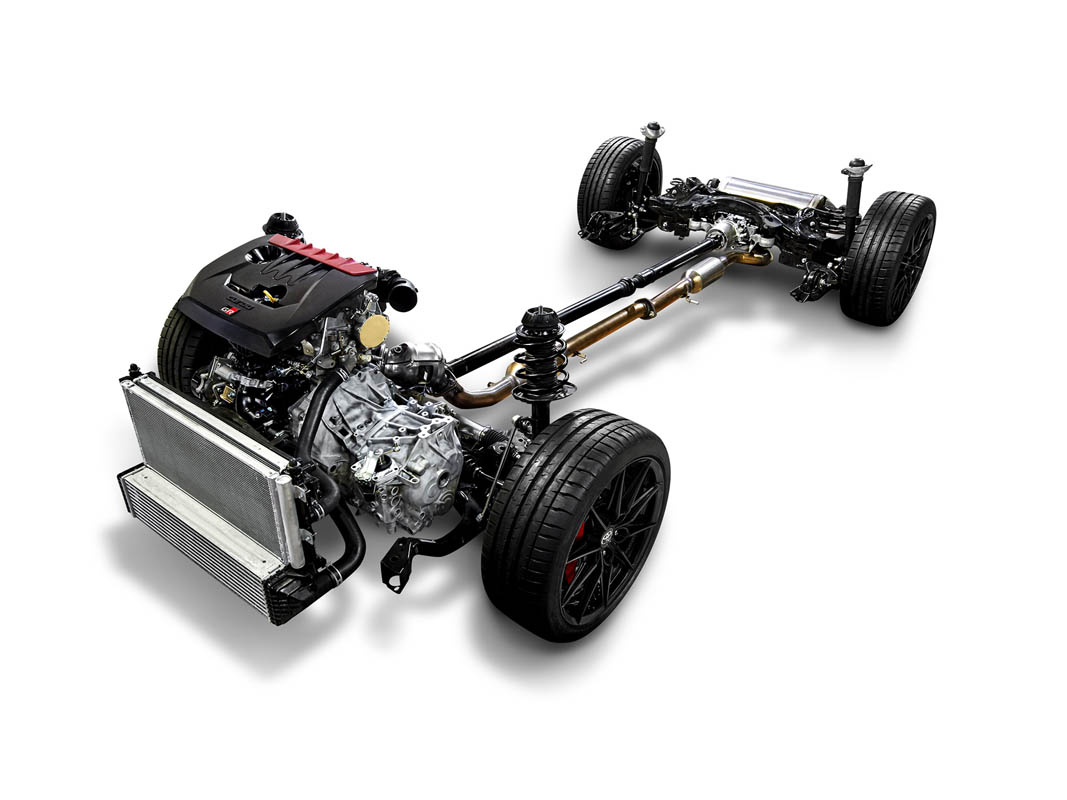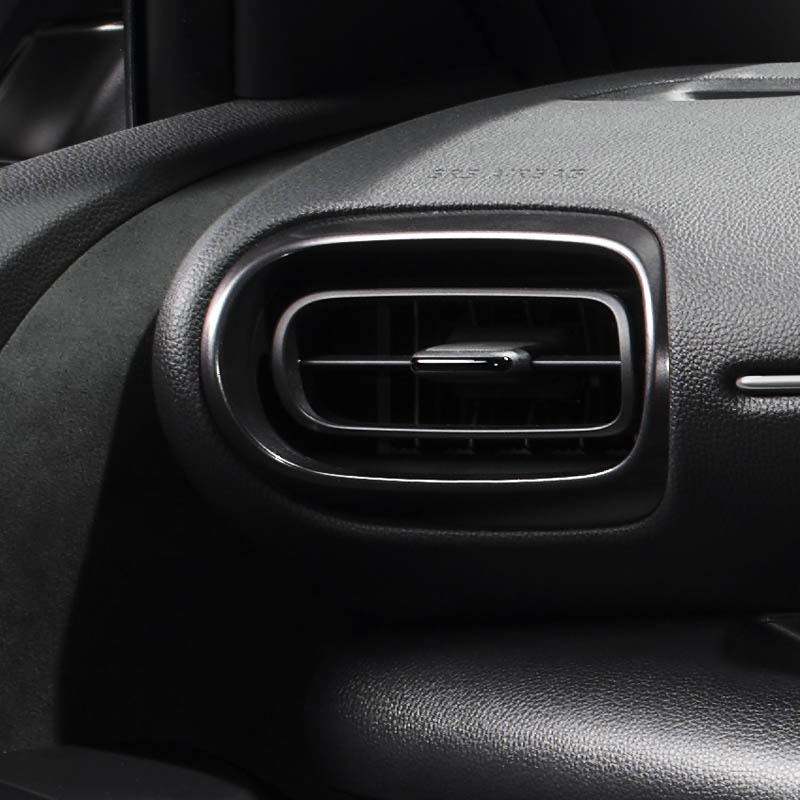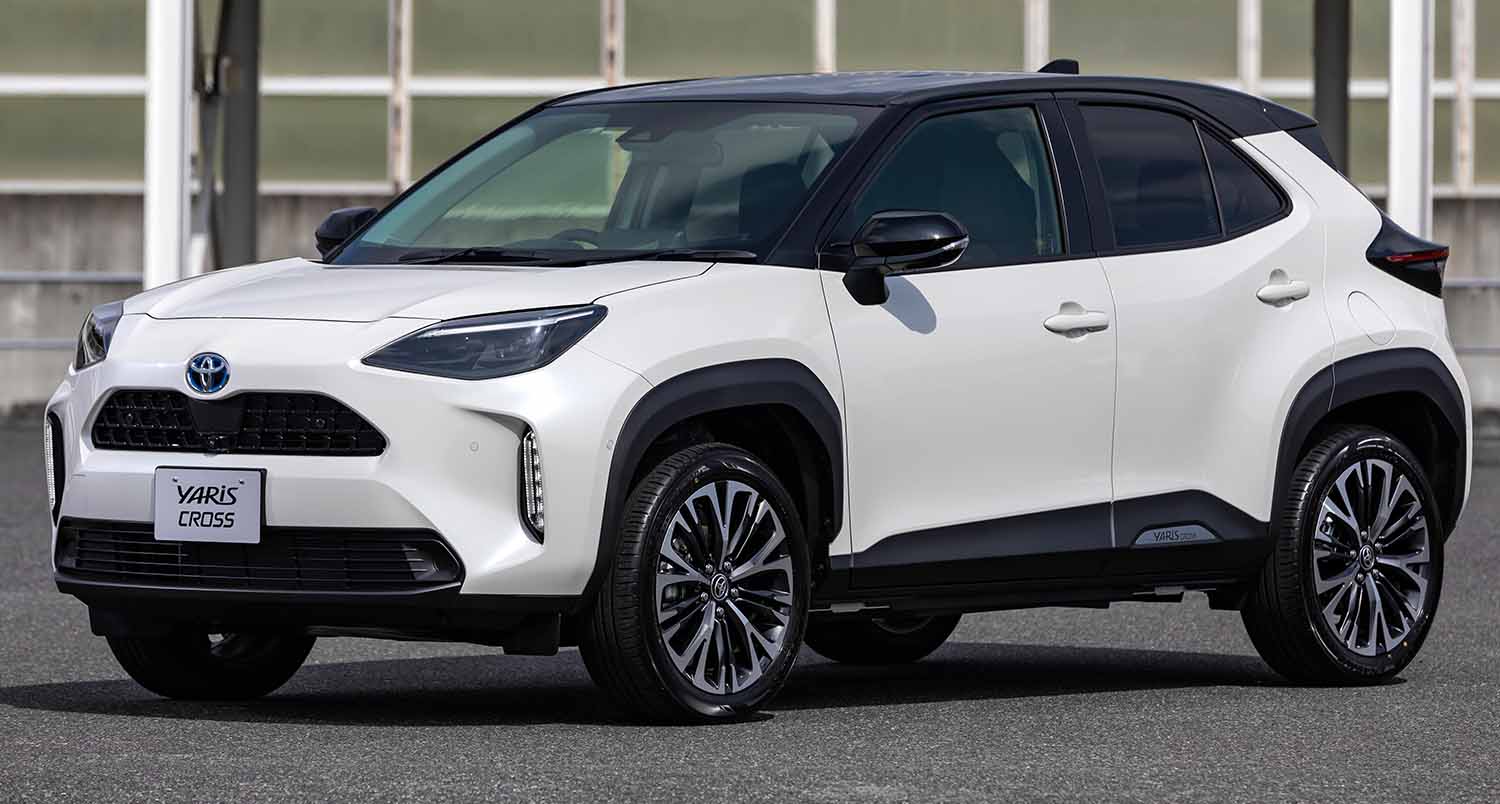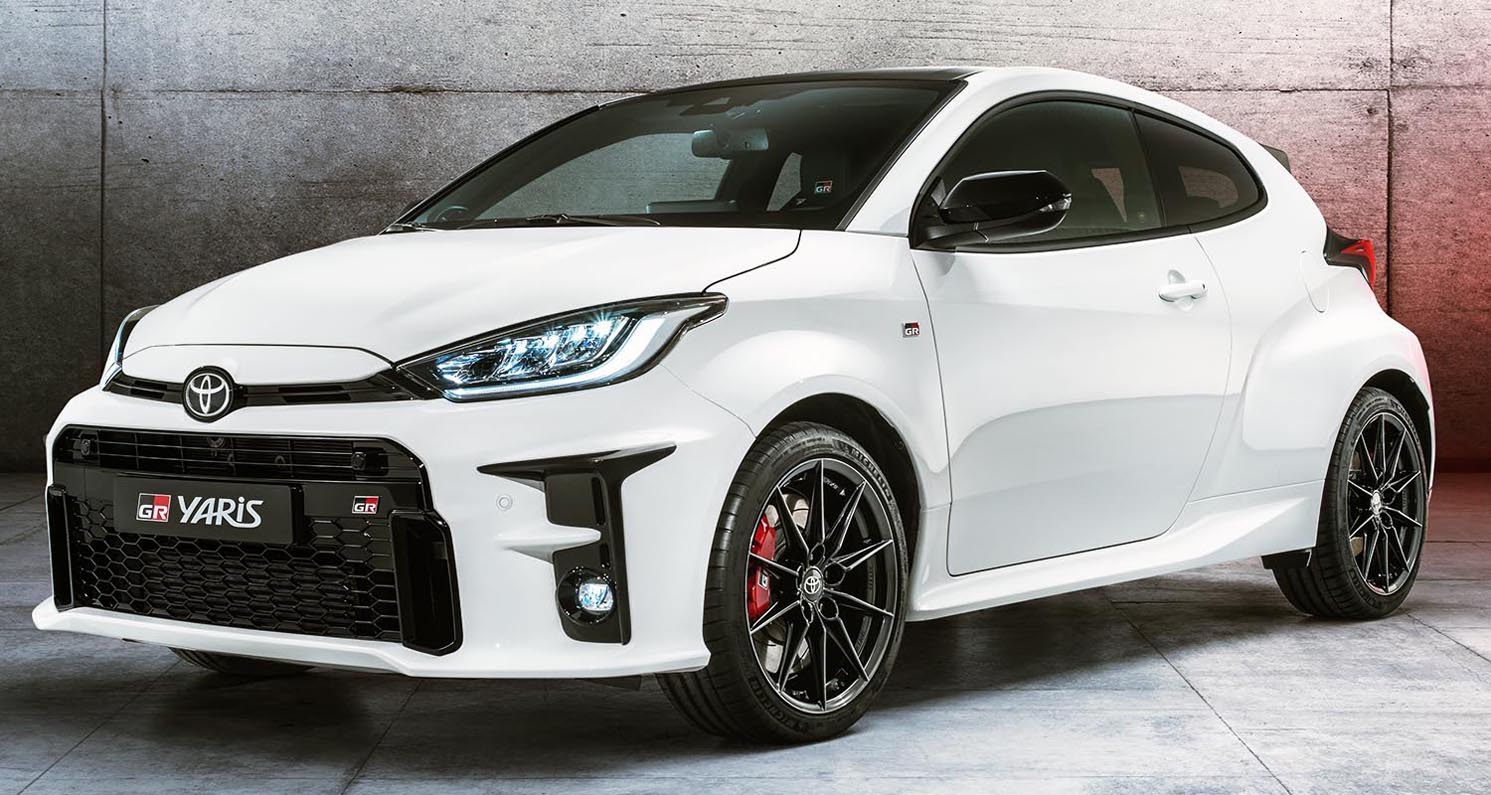
When Toyota announced its return to the World Rally Championship in 2015, the concept of building a rally-inspired sports car was part of the plan. The vision was to take technical knowledge and experience from the highest level of international competition and apply them to a new road car that is also suitable for competition driving, and an affordable proposition for customers.
For Toyota President Akio Toyoda, the creation of a sports car made purely by Toyota – the first in 20 years – was a personal ambition. Following on from winning the WRC manufacturers’ championship in 2018, he saw a winning car as being key to achieving global recognition as a true auto manufacturer.
The GR Yaris is that car, built from scratch and designed to win at highest levels. It is Toyota’s second global GR model, following the successful launch of the GR Supra in 2018.
There were basic challenges to be met in terms of technical know-how and creating a car that customers would buy. From the outset, the development team worked closely with Tommi Mäkinen Racing to better understand how their goals could be achieved. It was a detailed and labour-intensive process, but one which has yielded strong results in terms of a car that has an ideal combination of rigid, lightweight construction, an agile and responsive chassis and a powerful yet compact turbo engine.
Professional rally drivers, including members of TOYOTA GAZOO Racing World Rally Team, drove the prototype models and provided valuable feedback. Testing was also carried out by Akio Toyoda in his expert role as a Toyota Master Driver.
The GR Yaris is built on a unique platform, combining Toyota’s new GA-B platform (which debuted on the new generation Yaris hatchback) and a rear section adapted from the GA-C platform used for the Corolla and C-HR. The rally team emphasised the importance of light weight and this is reflected in the use of aluminium body panels and a forged carbon composite roof in the body structure, and scrutiny of how weight could be reduced in parts throughout the car.
For the best possible aerodynamic performance, the body itself is another unique element: although based on the new Yaris hatchback, it is a three rather than five-door model, with a lower, tapering roof line. This has been designed specifically to direct wind flow onto the large rear rally car spoiler to generate extra downforce. As with a competition car, the shaping of the lower body efficiently channels airflow down the sides of the vehicle.
The engine is also all-new, a 1.6-litre, three-cylinder turbocharged unit. It is the world’s most powerful three-cylinder engine and also the smallest and lightest 1.6 turbo. Producing 261 DIN hp and 360 Nm of torque, it complies with WRC2 technical regulations and can launch the GR Yaris from rest to 100 km/h in just 5.5 seconds, and on to an electronically limited top speed of 230 km/h. Its construction makes use of features derived directly from motor sport, including a ball bearing turbocharger, large-diameter exhaust valves and multi-jet oil piston cooling.
A kerb weight of just 1,280 kg gives the GR Yaris an excellent weight-to-power ratio of 4.9 kg per 1 DIN hp.
Engine power is harnessed through a Toyota’s new GR-FOUR permanent, electronically controlled all-wheel drive system. Another competition-inspired feature, this provides three driving modes with different front/rear drive torque to suit the conditions – Normal, Track and Sport.
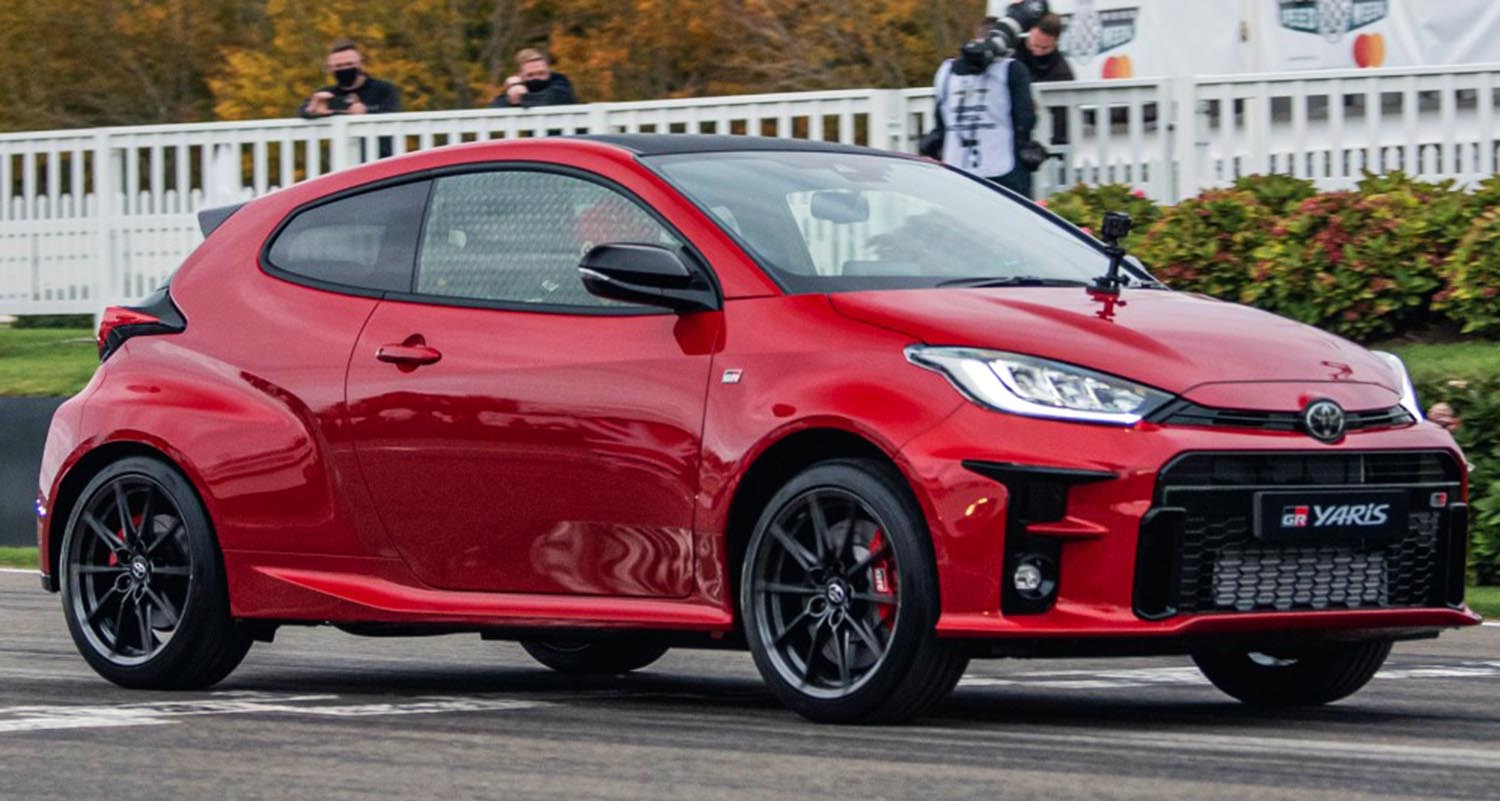
Exterior design
The GR Yaris’ packaging has been developed by pushing the limits of performance, with close consultation between the design team and colleagues at Tommi Mäkinen Racing, TOYOTA GAZOO Racing’s World Rally Championship partner.
Although the new Yaris hatchback is the base vehicle for the new model, the only unchanged exterior parts are the headlights, door mirrors, rear light clusters and the shark fin antenna on the roof. Everything else has been redesigned or adapted to meet the targets for downforce, aerodynamic performance and stability.
Overall length is 3,995 mm, 55 mm greater than the standard Yaris, with the wheelbase unchanged at 2,560 mm. The redesigned front and rear increase the overhangs by 40 and 15 mm respectively. Overall width is 1,805 mm (+60 mm) and overall height 1,455 mm (-45 mm)
The principal change is the move from a five-door to a three-door body. The GR Yaris is the only model in the new Yaris range to use this format, appropriate for WRC competition where the regulations stipulate no changes may be made or aerodynamic elements added to the doors.
The requirement to maximise downforce and aerodynamic performance resulted in a lowering of the car’s roof line, by up to 95 mm at its rearmost point compared to the standard hatchback. The revised profile increases the volume of air flow hitting the spoiler mounted on top of the rally car back door, generating extra downforce. Following the aerodynamic performance of the competition car, the design of the lower body directs air flow from the front wheel housing close along the side of the vehicle.
The front of the car projects a strong sense of purpose featuring the signature GR “functional matrix” design. Cooling air is fed to the radiator, intercooler and engine compartment through a large, rectangular lower grille with a wide honeycomb mesh. The prominent spoiler has a downforce-generating shape, with a raised centre section that controls the flow of air beneath the vehicle. There are also deep upper and lower lips at each corner that act as canards, generating downforce when driving through bends. The grille is flanked by large vertical inlets for the brake duct and intercooler, with circular LED fog lights positioned at the far edges of the bumper unit. Discreet GR badging is featured on the lower grille, the front wings and back door, alongside the right-hand LED light cluster.
At the rear, the tapering of the roof and rear pillars and the addition of the deep, high-mounted spoiler, enhance downforce and aerodynamic performance. The wide track and flaring of the rear wings emphasise the car’s wide and low silhouette. The rear wings have a flat side surface and minimised corner radius, which smooth the flow of air away from the vehicle and reduce drag. Aerodynamic performance is also improved by shape of the rear diffuser (the aero step) being folded into the bumper unit.
Equal attention has been paid to under-car aerodynamics with an engine under-cover, left and right-side floor under-covers and spats in front of each wheel.
GR Yaris is available in four paint finishes that match TOYOTA GAZOO Racing’s competition colours: Super White as standard and optional White Pearl, Emotional Red and Precious Black.
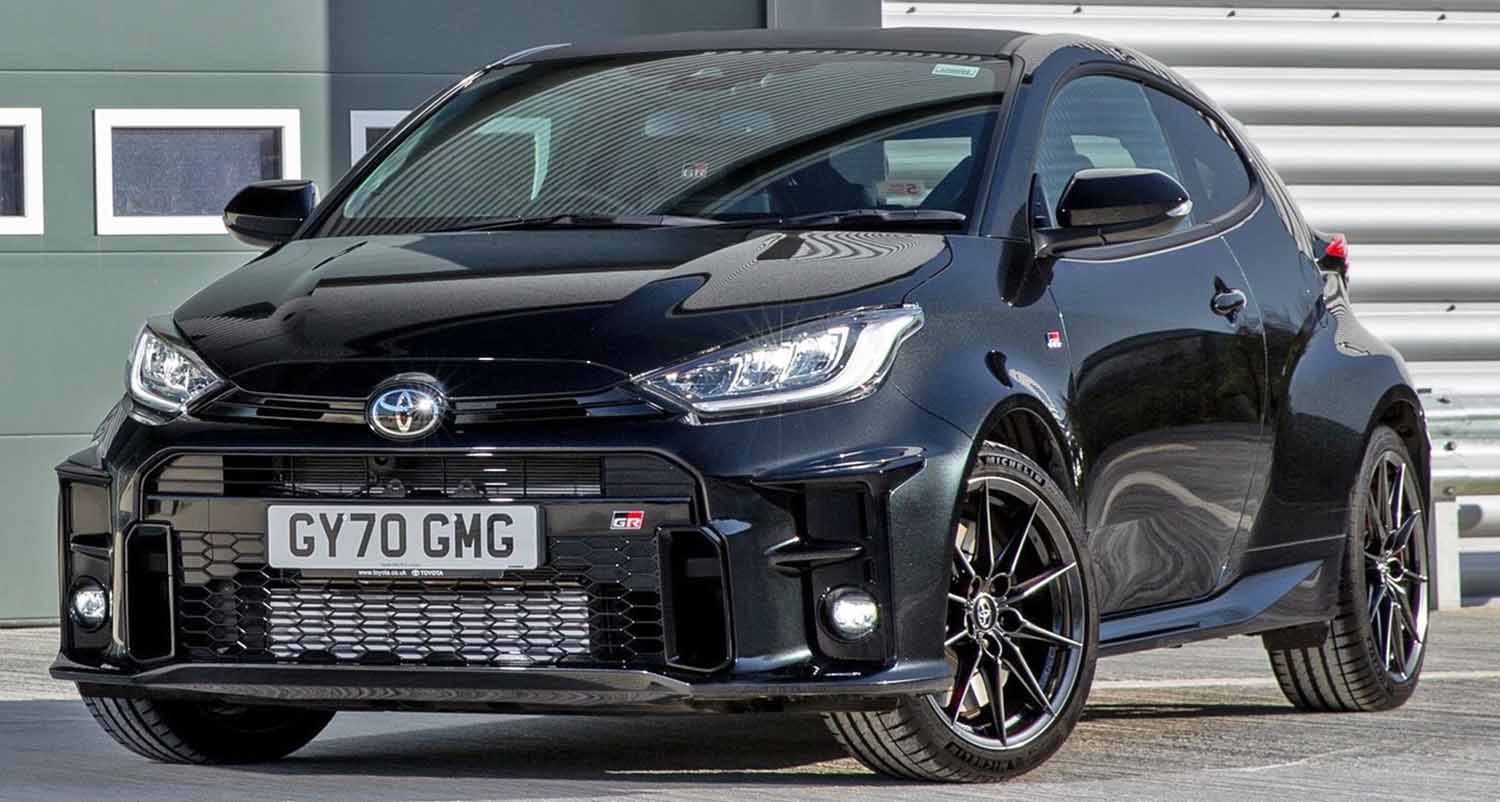
Interior design
The design of the GR Yaris’ interior reflects the car’s performance, particularly around the driver’s cockpit.
The binnacle has the same binocular arrangement as the standard Yaris but with additional functions related to the car’s specific performance qualities. The 4.2-inch TFT colour multi-information display adds an all-wheel drive indicator showing the torque distribution and mode selected for the GR-FOUR system and a turbo pressure monitor. The analogue meters have white figures with red pointers for high, at-a-glance visibility.
The gear shift lever has a high position on the centre console, raised by 50 mm and set close to the steering wheel, helping the driver make quick shifts. The action is light with short shift strokes, adding to the performance quality. The GR Yaris has a mechanical hand-operated parking brake, which the driver can use for cornering in rally stage driving. This is made possible by a specific function of the GR-FOUR coupling system which fully opens the coupling when the handbrake is used.
The GR-FOUR selector control is set just forward of the gear shift, for easy changes between Normal, Sport and Track modes.
The interior is finished in black with Smoke Silver trim details around the door handles, centre console, steering wheel and side air vents.
The luggage compartment has a 174-litre capacity. With the rear seatbacks folded, there is space enough to carry a set of four large tyres or a bicycle. With the accessory battery housed beneath the deck board, the GR Yaris comes with a tyre repair kit in place of a spare wheel.
LIGHT WEIGHT THE PRIORITY
Throughout the GR Yaris there has been a focus on saving weight to maximise the performance potential, without compromising strength and safety. This rigorous approach is particularly evident in the car’s construction, with extensive use of lightweight metals and materials used in key areas. Toyota’s success in bringing down the car’s mass has achieved a kerb weight of just 1,280 kg and a weight-to-power ratio of 4.9 kg per 1 DIN hp.
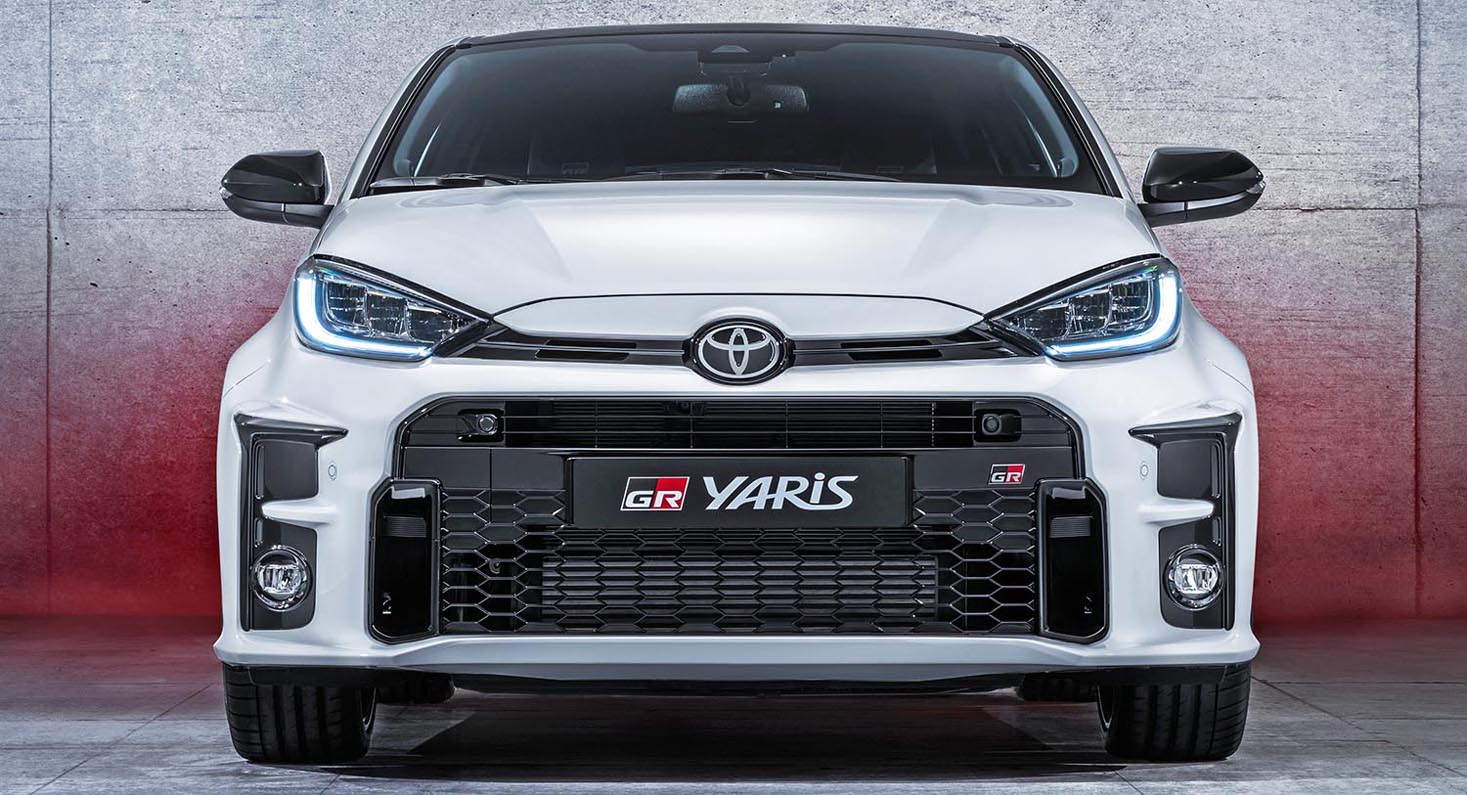
Body shell
In a first for a Toyota model, the roof is made of a new forged (rather than woven) carbon material, C-SMC (carbon sheet moulding compound), which saves 3.5 kg compared to a steel roof and helps lower the car’s centre of gravity.
Aluminium is used for the bonnet, the back door and front doors, marking a weight reduction of about 24 kg. Overall, the body shell contains around 10% aluminium and weighs about 38 kg less than the previous generation Yaris hatchback. Thin-sheet steel is used in the wings and side members, with light and strong high-tensile steels in critical areas to ensure the car’s structure can safely absorb and dissipate impact forces.
Hard-top doors with frameless windows
The doors on the three-door GR Yaris are elements that cannot be changed or replaced for WRC competition. Made from lightweight aluminium they have a hard-top design with frameless windows which reduces the step and allows the glass to sit tighter to the body. This improves its sealing performance at high speeds and removing the need for a door reinforcement.
Re-shaped back door and lightweight rear bumper
The back door – another body part which cannot be changed for competition – has been redesigned to fit with the GR Yaris’ lower roof line and three-door body shape. Both the inner and outer panels are made of aluminium, further reducing the car’s mass.
The rear bumper is made of TSOP (Toyota Super Olefin Polymer) which allows for a thinner construction, achieving a 38% weight reduction. TSOP also offers an environmental benefit, being easily recyclable.
The GR Yaris Circuit Pack equips the car with lightweight forged alloy wheels with highly rigid spokes. These further reduce the car’s overall weight.
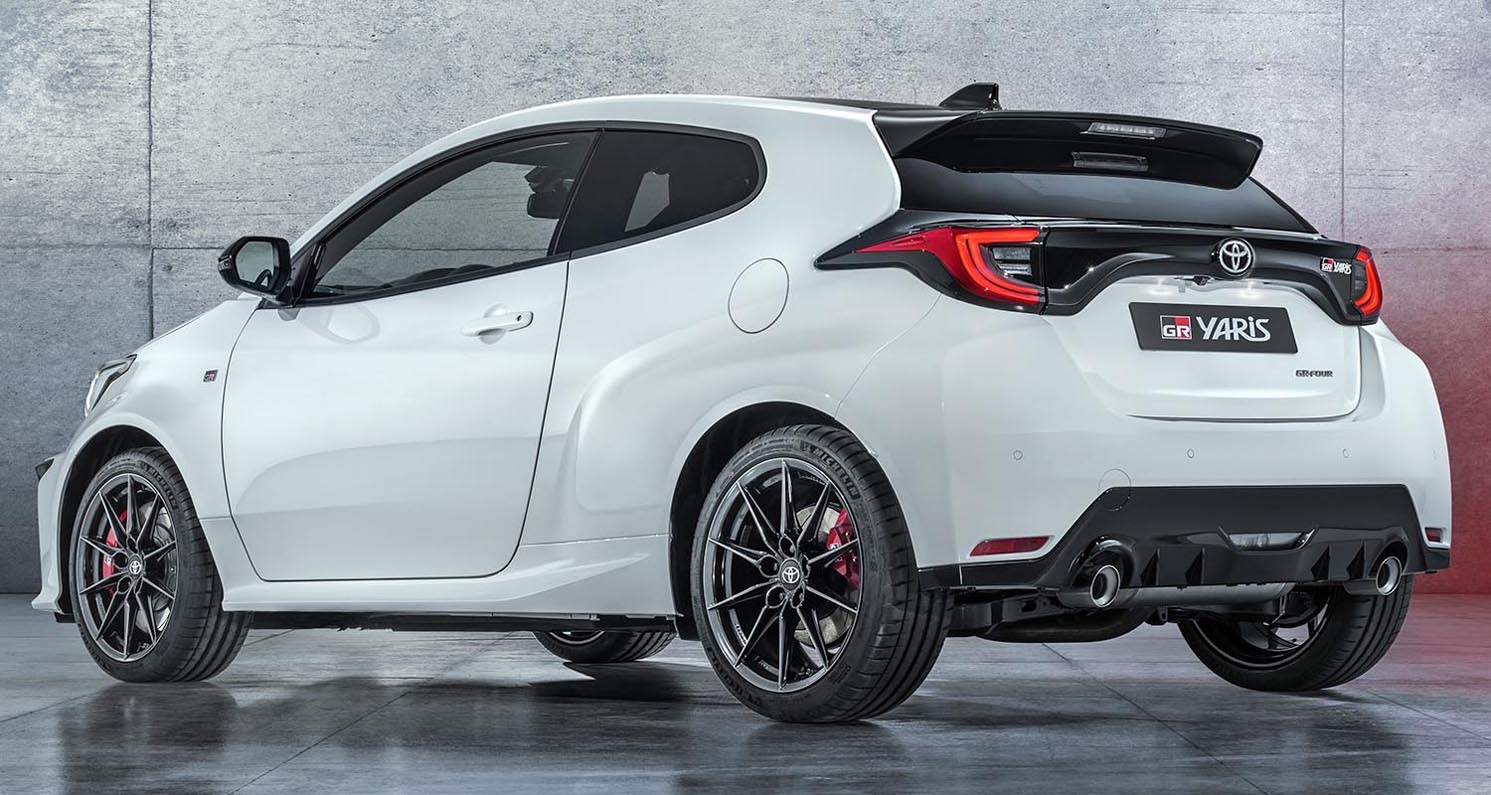
POWERTRAIN
The fundamental requirement for the GR Yaris’s engine was a sports unit that would deliver outstanding, powerful acceleration and exhilarating sense of continuous power, in keeping with the car’s “GR” designation. The result is a new, in-line three-cylinder engine with a versatile quality that makes it comfortable for day-to-day driving as well as competition performance.
The 1,618 cm3 12-valve engine meets the World Rally Championship’s Rally 2 (formerly R5) regulations, following Toyota’s negotiations with the sport’s governing body to allow a three-cylinder format. Atsunori Kumagaya, who led the development project, explained: “We preferred this engine due to its light weight and compact size making it simple to install, while the lack of exhaust gas interference made it easier to obtain power.”
The unit is in fact the largest-capacity and most powerful three-cylinder engine currently in production, yet it is also the smallest and lightest 1.6 turbo unit. Its maximum power output is 261 DIN hp/192 kW at 6,500 rpm, with maximum torque of 360 Nm delivered from 3,000 to 4,600 rpm – performance on a par with that of a 2.0-litre turbo unit.
GR Yaris is as light as a B-segment hot hatch (kerb weight 1,280 kg), yet the power is comparable to C-segment performance models. Acceleration from 0 to 100 km/h can be accomplished in 5.5 seconds, while the top speed is electronically limited to 230 km/h.
With a focus on power and light weight, the GR Yaris achieves an exceptional weight-to-power ratio of 4.9 kg per DIN hp. The car’s body-in-white weight is 12% less than the new generation Yaris, thanks to the use of lightweight materials in its construction, including aluminium for the bonnet and doors and carbon fibre composite for the roof (further details above). Compared to the standard Yaris, the engine is positioned 21 mm further back in the compartment, contributing to the car’s weight distribution, dynamic balance and low centre of gravity.
The development team drew on the knowledge and experience of their TOYOTA GAZOO Racing colleagues to maximise the engine’s potential, adopting a number of motorsports-derived technologies to help them meet their goals. These include a ball-bearing turbocharger, large-diameter exhaust valves and multi-jet oil piston cooling.
Construction
In addition to high performance, the new engine has been designed for light weight, high-speed combustion, drivability, enhanced cooling and fuel efficiency.
The high-speed combustion package includes high-efficiency ports, with an increased valve angle, eccentric valve seats and, drawing on motorsport design, larger diameter exhaust valves. To help bring down the engine’s mass, the block and crankshaft have been optimised for rigidity and the thickness of the block’s outer wall has been minimised. The crankshaft’s balance has also been optimised. Further weight has been saved by using individual (top and bottom) timing chain covers and a shallow water jacket block.
To promote fuel efficiency, the piston skirts have a low-friction surface treatment and the main bearing is optimised to reduce oil supply.
Although a sports engine, the new unit is able to make use of shared Toyota TNGA components and technologies, including high-strength con-rods, hydraulic lash adjusters, lightweight pistons, camshaft (with slightly concave radius) and high-energy ignition coil.
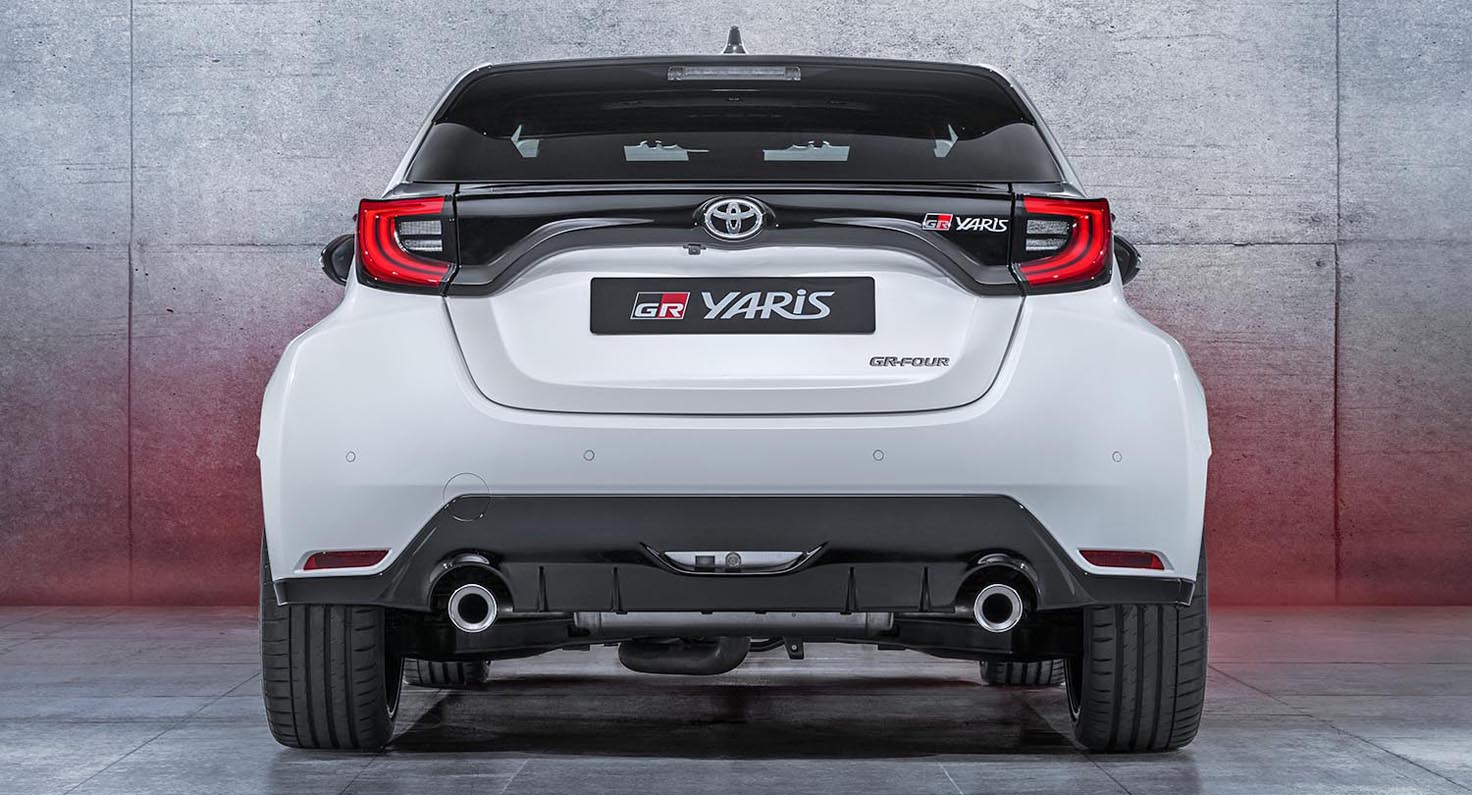
Turbocharger
The engine’s single-scroll turbocharger had to be strong enough to deal with high outputs, but using a large-capacity unit risked diminishing performance though turbo-lag. The solution was to adopt wear-resistant abradable seals and a ball bearing to improve the compressor’s efficiency and reduce friction. The controls are positioned close to the wastegate valve so that gas flows on the turbine side, reducing lag when the accelerator is pressed.
The turbocharger is integrated in the exhaust manifold, reducing weight, while control of wastegate bypass gases is used to improve the warm-up efficiency of the catalyst. The controls have been improved so that turbo performance can be fully utilised from low airflow volumes, contributing to excellent acceleration response. An air by-pass valve controls the turbo pressure and prevents surge. The large, cross-flow type intercooler features a long core length and low pressure-loss inner fins to help realise high engine output, responsiveness and cooling capacity.
Lubrication and cooling
The water-cooled oil cooler is made of aluminium, saving weight and giving high heat exchange efficiency., with heat dissipation performance appropriate for the engine’s high output. The unit is installed upstream of the main oil filter, so there is less risk of bearing seizure due to foreign matter in the oil.
To accommodate the high power output, the engine cooling system uses a belt-driven large-capacity water pump. The oil cooler is located in the water pump outlet, which improves its cooling performance and efficiency.
Fuel system
The high-pressure (22MPa) D4-S direct fuel injection system operates with increased pressure to achieve finer spray atomisation. The high-tumble air flow in the combustion chamber increases the dispersion of the injected fuel to enhance engine performance. The six-hole spray design avoids interference with the valves to help achieve lower emission and has been optimised for precise control.
The port injection is via long-nozzle, 10-hole injectors. Intake port flow has been optimised to reduce fuel adhesion to the walls, contributing to fuel and emissions efficiency. Optimisation of the moving parts and magnetic circuit give excellent performance at high temperatures, which again reduces fuel consumption and emissions.
New intake system
A new intake system has been developed suitable for the engine’s high output and to create a sporty sound.
Because the battery is located in the luggage compartment, there is room to accommodate a large air filter, which helps reduce low pressure losses. The unit has a 10.8-litre capacity and contains a fine sound-absorbing fibre material. The filter uses a new paper and fine fibre compound construction that is both more efficient in collecting dust and reducing low pressure losses. An air-liquid separation structure prevents water or snow from entering the system.
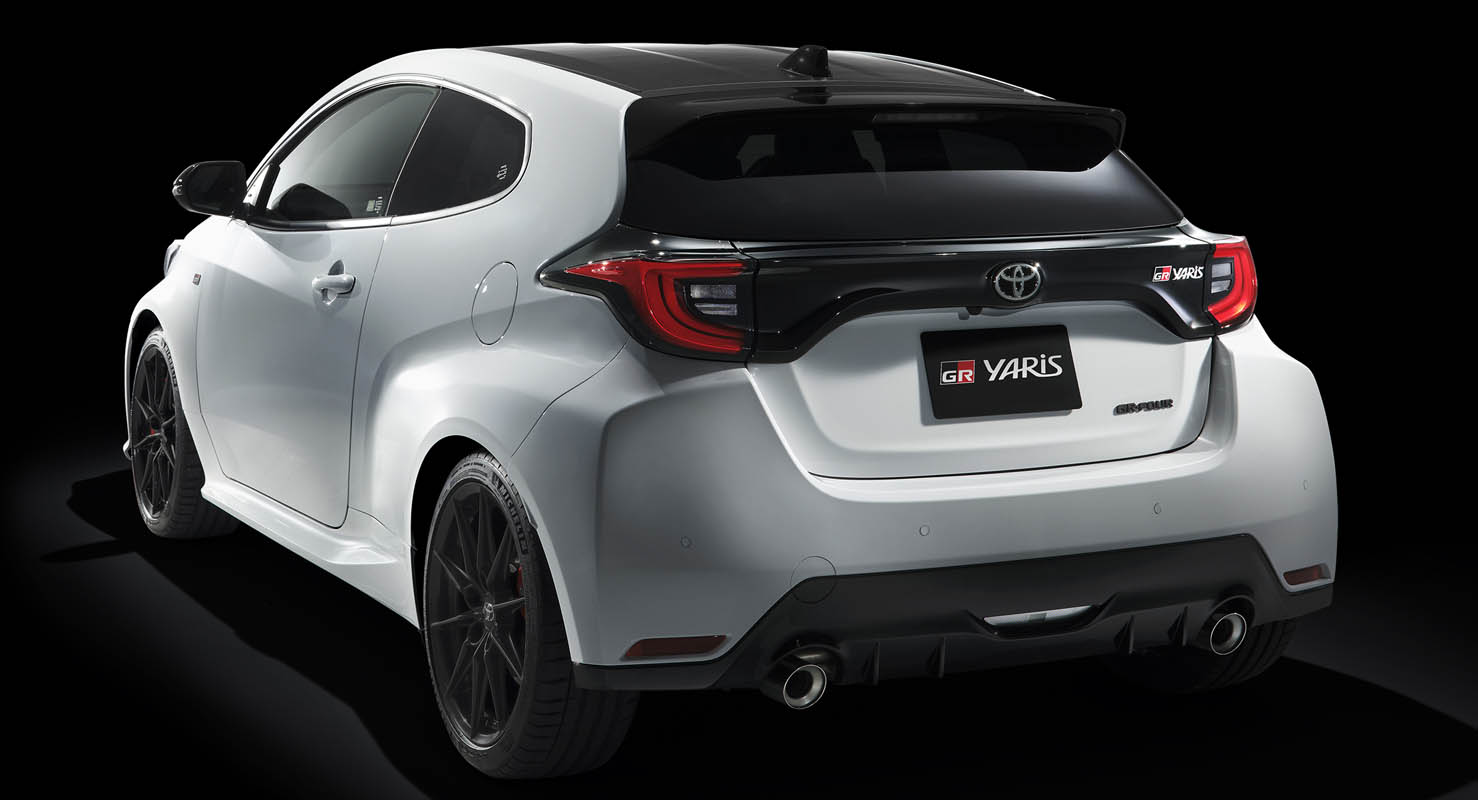
Stop-start system
The engine is equipped with a stop-and-start system that automatically stops the engine when the vehicle comes to a halt, with the gear shift in neutral. Restart is smooth and automatic when the driver presses the clutch pedal. The system reduces fuel consumption and emissions.
Engine mounting
The engine uses a completely redesigned mounting system that reduces noise and vibration. The right-hand mount is a hydraulic type to gain ride comfort and reduce vibration during idling. Its rubber characteristics and the position have been optimised to achieve better noise and vibration performance. The two torque rods are made of aluminium, reducing weight.
The change in the rubber’s spring rate adds to acceleration responsiveness and feel, reducing displacement of the engine in the roll direction when the accelerator is pressed. Similarly, an increased lateral spring rate enhances steering responsiveness and feel.
Engine sound
A sporty engine sound is a key part of the GR driving experience. In the GR Yaris the effect is heightened by a control sound directed through the sound system’s amplifier to enhance the quality of the engine note. Active Noise Control uses a microphone to detect noise generated by engine rotation; cancelling noise is calculated by computer and output through the car’s audio speakers.
NEW GR-FOUR ALL-WHEEL DRIVE SYSTEM
The new GR-FOUR system is the first original sports all-wheel drive system Toyota has created in 20 years. Developed specifically for the GR Yaris, it controls vehicle posture and allows the car’s power to be realised with high traction and faithful cornering, regardless of road surface quality.
The full-time system is simple in design and light in weight – lighter than alternative twin-coupling or centre differential systems. Operation is electronically controlled, with three modes the driver can select to suit their preference or the driving scenario. Slightly different gear ratios are used in the high-response coupling and rear differential, allowing greater drive force to be directed to the rear wheels even when there is no slip at the front wheels.
The mode options are: 50:50 Track mode, suitable for fast driving in any road conditions, from dry to snow; 30:70 Sport mode, to prioritise rear-wheel drive characteristics; and 60:40 Normal mode (the default mode), suitable for day-to-day performance.
The transfer case is constructed in aluminium and contains a hypoid gear, with bearing support optimised for rigidity. Lightweight aluminium is also used for the rear differential, which is integrated with an electronically controlled multi-plate clutch. The two units are connected by a three-joint, two-axis propeller shaft.
The system’s ECU controls the drive torque distribution to suit the driving situation, according to data gathered on vehicle performance such as speed, acceleration, braking and steering. Electronic control of the multi-plate clutch uses information from the wheel speed and G sensors and the clutch’s temperature sensor.
The GR Yaris Circuit Pack is additionally equipped with front and rear Torsen limited-slip differentials which offer enhanced cornering performance and grip with control of left and right-hand drive torque distribution on the front and rear axles.
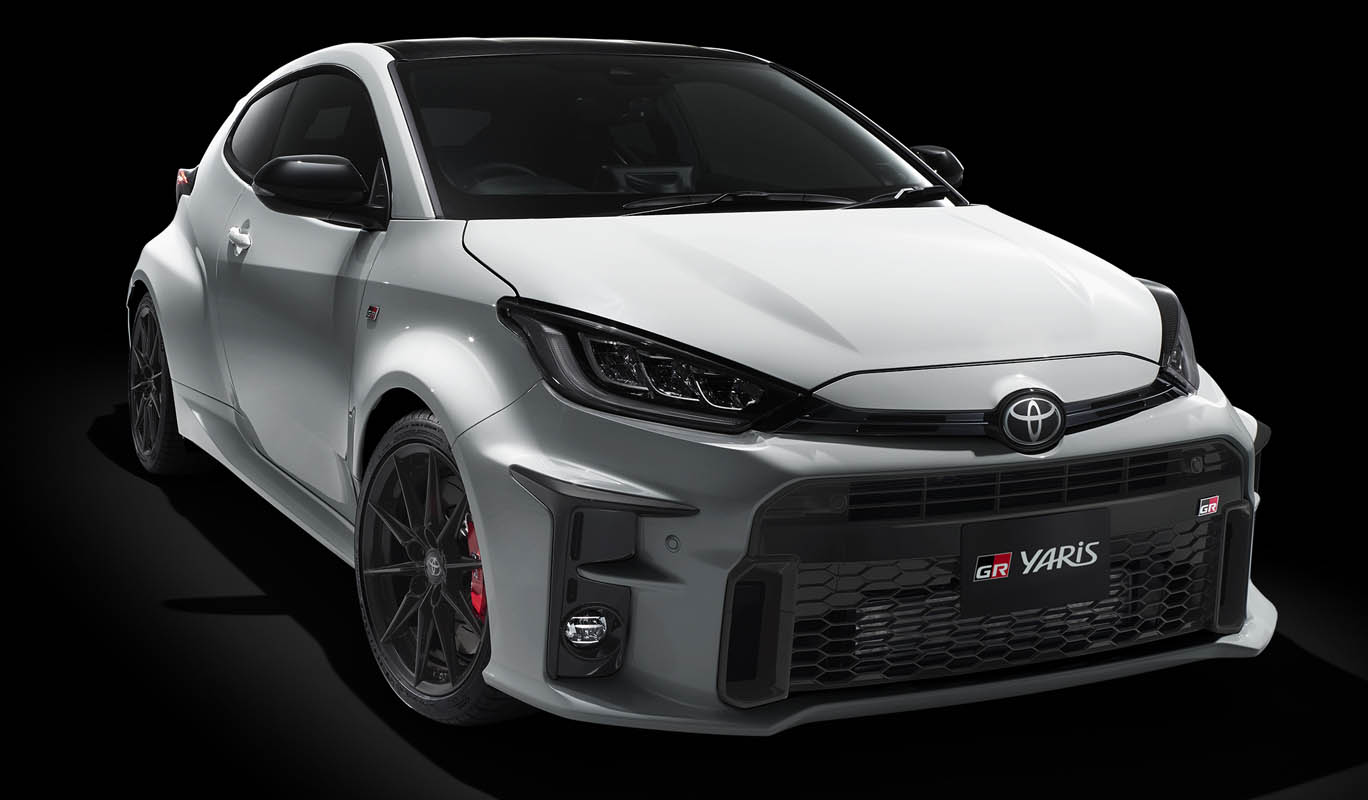
High body rigidity
Producing a highly rigid body was one of the core requirements for the GR Yaris, critical to its handling performance and driver rewards.
To achieve the desired level of rigidity, significantly more weld points are used, particularly in areas where they can strengthen joints. There are 4,175 in total, 259 more than on the Yaris hatchback. Further gains are made through extensive use of structural adhesive, increasing the joint rigidity between component parts which adds to the car’s excellent handling stability in areas such as yaw response, steering feedback and the feel of grip communicated to the driver. In all, 35.4m of adhesive is used, 14.6m more than on the standard Yaris.
Special attention has been paid to the joint structure at the rear, with a strainer giving support at 45 degrees from the shock absorber inputs. This suppresses toppling of the rear wheel housing to give an excellent level of torsional rigidity. A continuous, enlarged cross-section runs from the rear header to the rear pillars, suppressing deformation when the tailgate is opened and further adding to the body’s rigidity. Further gains have been made by lengthening the rear wheel house inner to connect directly to the rear pillar inner.
To gain better front/rear weight distribution, the battery is located beneath the rear load space floor.
Suspension
The front suspension is a new MacPherson strut design that offers both light weight and high rigidity that maximises the tyres’ grip potential.
The requirement was for the suspension to be capable of delivering all the engine’s power to the road and maximise the tyres’ cornering capability on all surfaces, so the driver can control the car with confidence it will perform faithfully.
To achieve overall high rigidity, development focused on the hub bearing and the front lower arm bushing. The rigidity of the hub bearing and front lower arm bushing were increased, with a reinforcing patch add also added to the front lower arm. The system features an exclusive, highly rigid front knuckle.
The suspension geometry and settings have been defined to maximise the tyres’ grip capability. The new knuckles, with a lower joint ball position, enable an increase in initial camber and optimised roll steer characteristics. The anti-roll bar layout and spring characteristics have also been optimised and the system uses an exclusive, high-response shock absorber set-up.
The new GA-C-derived platform allowed for a specific rear suspension system to be designed to meet the GR Yaris’ performance targets, accommodating all-wheel drive and achieving high levels of agility and stability. The design uses trailing double wishbones, in place of the torsion beam arrangement found in the standard Yaris hatchback. As with the front suspension, the design achieves light weight and high rigidity and focuses on maximising tyre grip.
The system helps keep the rear tyres firmly planted, with the excellent road-holding providing harder lateral and torsional movement, which is key to vehicle control and more supple vertical movement. Factors contributing to the rigidity include two ball joints on the lower side, and more rigid bearings and rear trailing arm bushes. New upper arms with a shorter span increase the initial camber, while, as with the front suspension, exclusive shock absorbers are fitted and spring characteristics are optimised to achieve the best possible grip.
Wheels and tyres
The GR Yaris is fitted as standard with 18-inch cast alloy wheels with a light and highly rigid multi-spoke design, the shape of the spokes reflecting the lines of a traditional Japanese sword. The tyres are 225/40R18 Dunlop SP Sport MAXX 050.
The GR Yaris Circuit Pack comes with lighter, forged alloy BBS wheels with a 10-spoke design, shod with Michelin Pilot 4S high-performance tyres, designed for extra grip for high-speed driving stability and control. To ensure the tyres’ full performance potential can be realised, the Circuit Pack features retuned suspension, with stiffer springs and anti-roll bars, adapted shock absorbers, and adjustment to the electric power steering assistance.
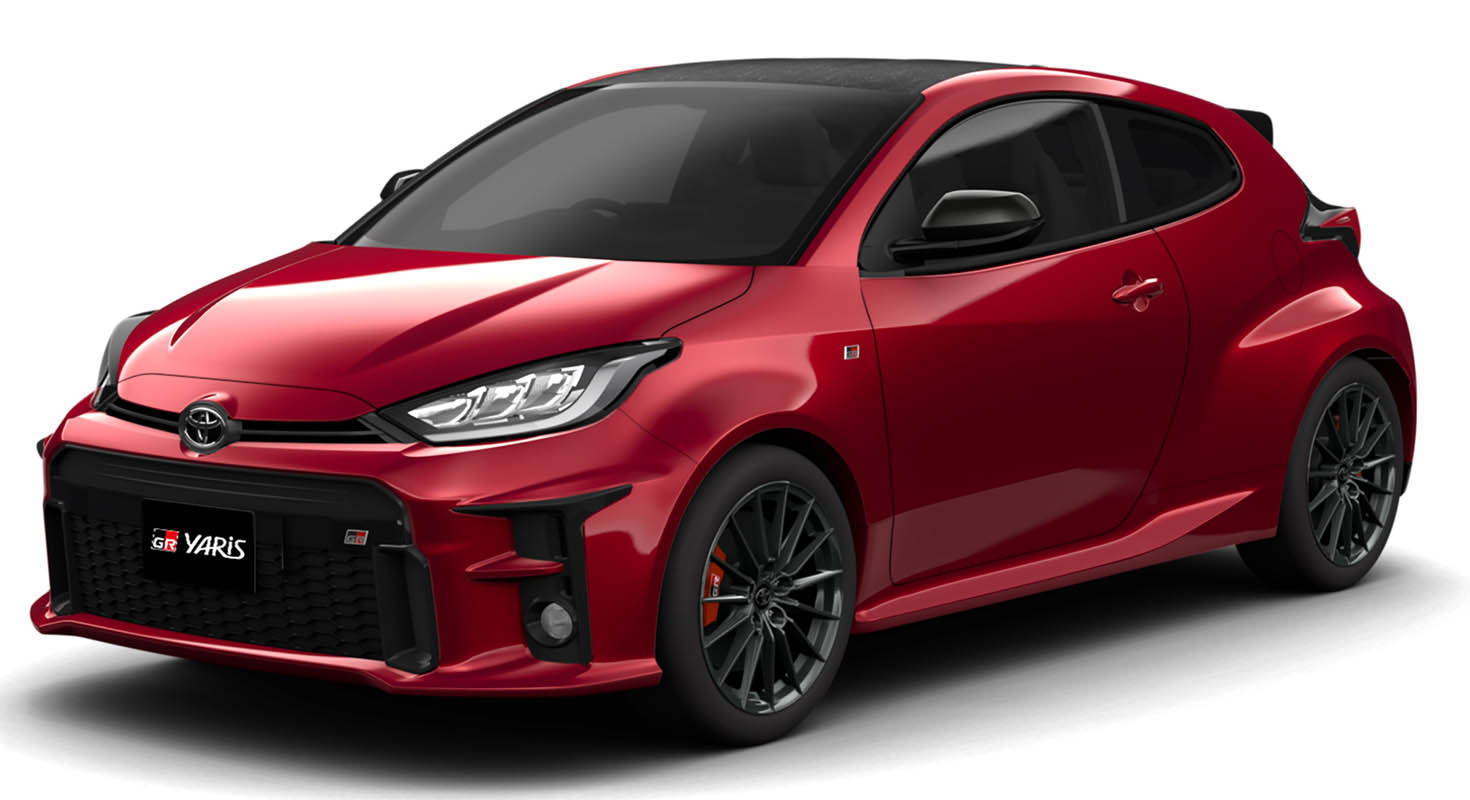
Brakes
It is significant that the brakes fitted to the GR Yaris compare in size to those used by the GR Supra – in fact the front discs are larger in diameter. The system is designed for ample braking ability while maintaining vehicle posture true to the driver’s intentions. Performance is responsive and controllable, giving rewarding continuity and balance to brake-corner-accelerate driving.
At the front there are 356 mm ventilated discs with four-pot, lightweight aluminium callipers; the rear brakes are 297 mm ventilated discs with two-pot aluminium callipers. On the GR Yaris Circuit Pack the front callipers are painted red and decorated with the GR logo.
High-friction pads are used front and rear. The brakes’ heat capacity is suitable for circuit driving, with performance closer to that of heavier and more powerful C-segment cars.
For the driver, the brake pedal has been designed with a short stroke and tuned for solid feedback. Braking has a linear feel, with little variation between city and sports driving.
Tyre Pressure Warning System
The Tyre Pressure Warning System (TPWS) fitted to the GR Yaris constantly monitors the pressures independently in each four wheels and warns the driver if there is any drop in pressure that might compromise fuel economy or safety. It further allows the driver to set and monitor the ideal tyre pressure to suit the track, or their driving style.
Steering
The steering is engineered for excellent control and linear feedback, contributing to the way in which the driver feels a great sense of connection to the car, and to the road.
As well as having increased rigidity, the steering column is made of aluminium, helping save weight. The manual steering gear ratio has been increased and attention has been paid to its friction characteristics, to ensure the driver receives the optimum feedback, even when making only small steering angle adjustments. Performance is further sharpened by minimising the delay before steering assistance is activated when the driver turns the wheel. Performance is quick and brisk, appropriate for a sports car.
The steering stroke ratio is 13.6:1 and the steering wheel takes 2.36 turns lock-to-lock.
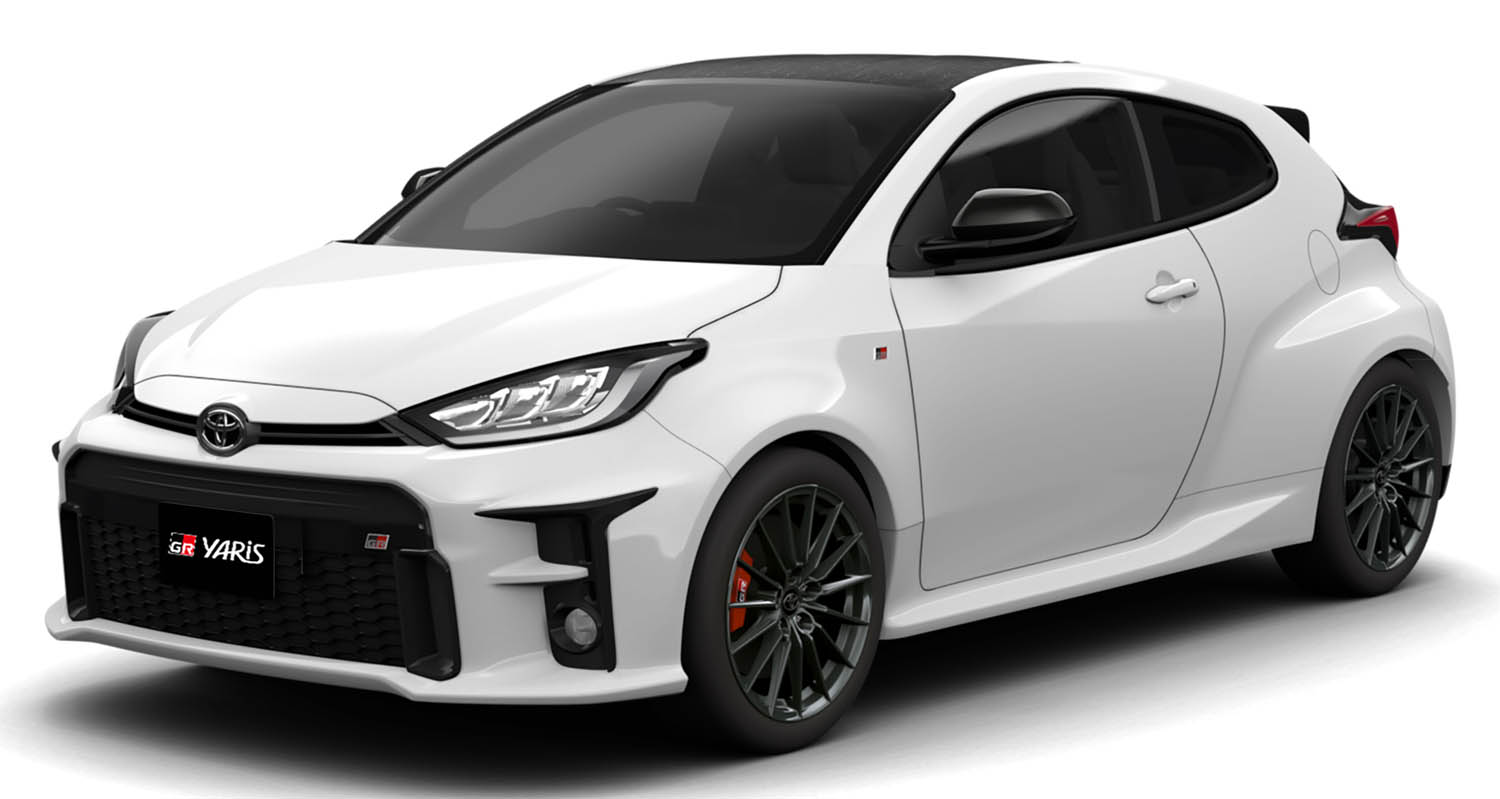
DESIGNING THE IDEAL DRIVING POSITION
An ideal position at the wheel is a key part of the GR Yaris driving experience, giving the driver a feeling of being connected to the car and the road and confidence to enjoy the car’s full performance potential. The feedback from the chassis, steering, tyres and brakes communicated through the driver’s seat, steering wheel and pedals, and the supportive, body-holding performance of the seat itself all contribute to making the driver feel in control and at one with the vehicle.
Seat design
The front sports seats give high holding performance, so a stable posture can be maintained, even during sports driving. The set frames are both light in weight and highly rigid.
A thicker urethane pad in the cushion reduces pressure beneath the base of the pelvis, while the pad beneath the base of the spine has been made thinner, with the internal rear rod moved forward, increasing pressure and improving support. The cushion material has been selected to ensure a stable surface and efficient pressure dispersion, making it easier and comfortable for the driver to maintain a good posture.
The driver’s seat has a generous range of height, fore-aft and seatback angle manual adjustment.
To make rear seat access easier in the three-door GR Yaris, the front seats have an increased forward tipping angle. The two rear seatbacks have a 60:40 split-folding function and are equipped with Isofix child seat anchor points with top tethers.
Steering wheel
The three-spoke GR sports steering wheel has a tactile, smooth-grain leather cover and is formed with an exclusive cross-section (the GR grip) calculated to provide snug fit in the driver’s palm, suitable for sports driving and easy control while maintaining a good posture.
To keep the spokes narrow, toggle-type auxiliary switches have been designed. The bottom spoke is finished in Smoke Silver and features the GR logo in a chrome frame.
The position of the column has been set to support a comfortable driving position with a wide range of manual telescopic and tilt adjustment (40 and 50 mm respectively).
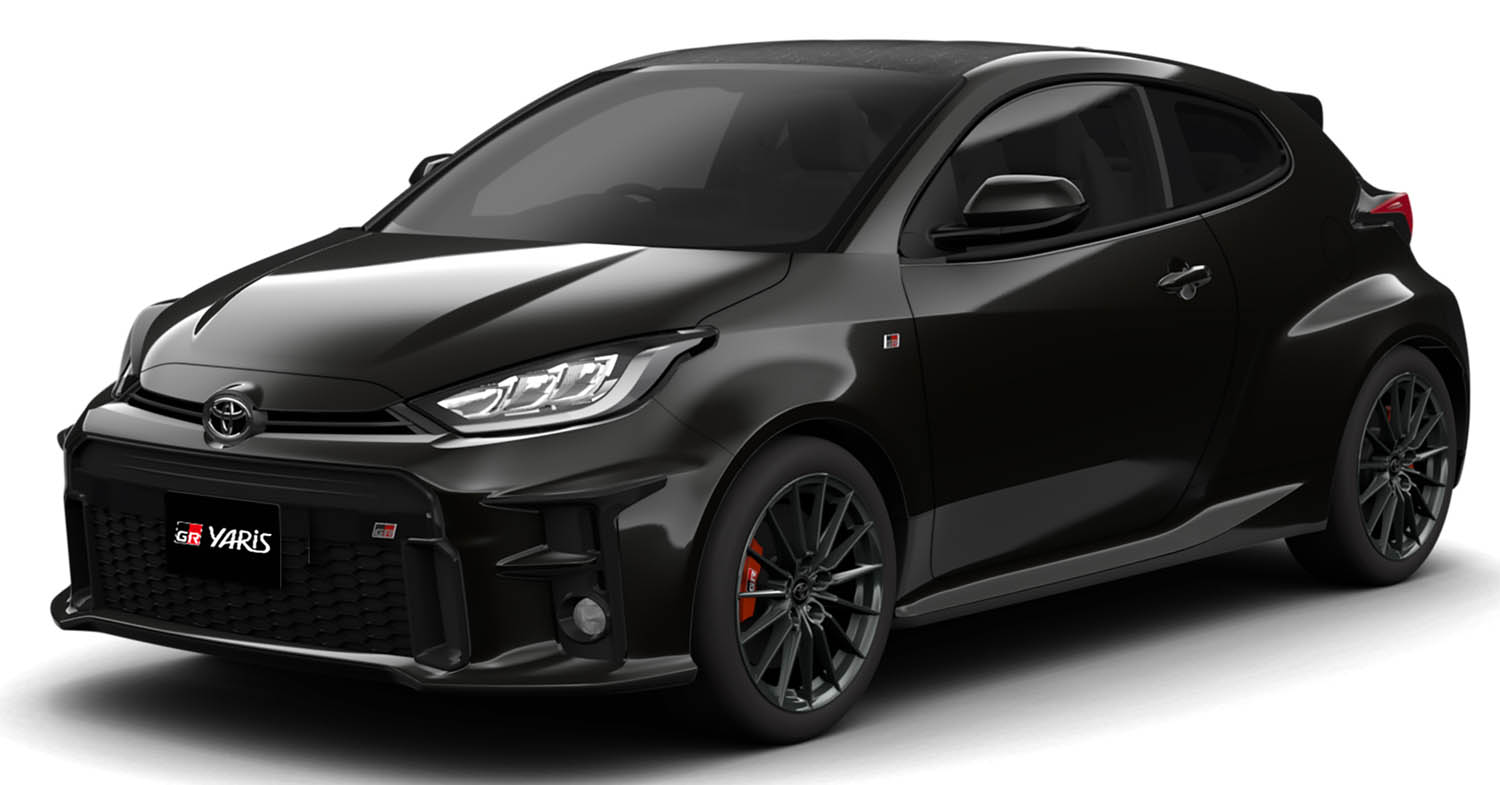
Sports pedals
The size, shape, position and angle of the pedals were taken into account when designing the driving position, to ensure they deliver the feel and controllability suitable for a car of the GR Yaris’ performance quality.
Featuring drilled aluminium surfaces and measuring 45 mm wide, they are arranged to suit sports driving techniques, including heel-and-toe between brake and accelerator. To ensure the precise pitch on the brake and accelerator pedals, the centre point of the pad is confirmed prior to vehicle assembly.
The pedal position, pad angle and pressing angle have been calculated in line with the driver’s hip point to gain the best possible controllability. The driver can also use the pedals simply by articulating their ankle, without moving their heel position. Details include a side wall on the right-hand edge of the brake pedal, to help prevent the driver’s foot catching on the pedal when moving across from the accelerator.
On the clutch pedal, peak pressing force has been set higher to achieve sports car-level feedback and feel.
MODEL RANGE AND EQUIPMENT FEATURES
The GR Yaris is well equipped for performance, safety, comfort and convenience, but owners can enhance their car’s profile with a choice of two option packs – Convenience or Circuit – to form part of their car’s standard specification.
On the outside, the GR Yaris features 18-inch 15-spoke alloy wheels with Dunlop SP Sport MAXX050 tyres. The power-operated door mirrors have an auto-retract function and black casings. Performance touches include a dual exhaust, shark fin antenna, black rear spoiler, carbon fibre roof, rear privacy glass, GR badging and a GR lower grille. The automatic LED headlights have an adaptive high-beam and the front fog lights also use LED technology.
In the cabin the sports front seats are upholstered in Ultrasuede with contrast red stitching and GR logos featured in the integrated head rests. The GR badging is also picked up in the carpet mats and on the three-spoke, leather-trimmed sports steering wheel. The multimedia system features an eight-inch touchscreen, plus DAB reception, eCall, smartphone integration via Apple CarPlay and Android Auto, USB port and a six-speaker audio. Dual-zone air conditioning, smart entry and push-button start, an auto-dimming rear-view mirror, 60:40 split-folding rear seats and automatic windscreen wipers are also provided.
The Convenience Pack adds a series of premium quality features, including a JBL eight-speaker premium audio system, satellite navigation, ambient cabin lighting, head-up display, front and rear parking sensors, a Blind Spot Monitor and Rear Cross-Traffic Alert.
The Circuit Pack puts the focus firmly on performance, introducing GR sports-tuned suspension and steering, front and rear Torsen limited-slip differentials, 18-inch forged alloy wheels with Michelin Pilot 4S tyres, an engine undercover and red brake callipers bearing the TOYOTA GAZOO Racing GR logo.
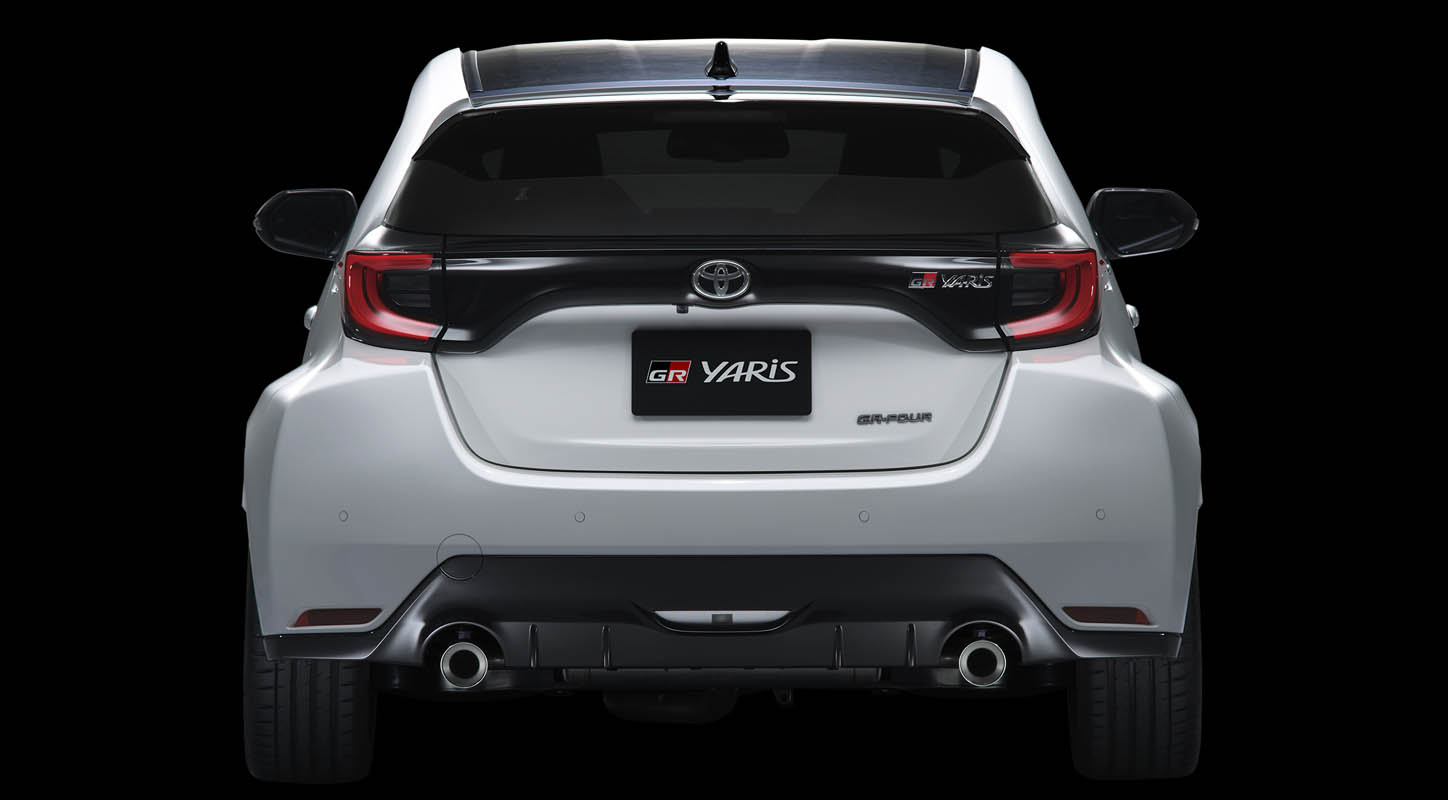
Toyota Safety Sense
The GR Yaris has the fundamental benefit of a strong body structure that is engineered to deform and absorb and dissipate impact forces in a controlled manner in the event of a collision, protecting the integrity of the passenger cell. In common with all new Toyota passenger vehicles, it also benefits from Toyota Safety Sense, which equips the car with a number of active safety and driver assistance systems that can help prevent some of the most common accident risks.
The package includes the latest advances in the systems’ functionality. These include the Pre-Collision System’s ability to detect pedestrians in the car’s path during both day and night-time driving, plus bicycle riders during daylight hours.
The PCS also provides Intersection Turn Assistance, which helps avoid the risk of colliding with another vehicle or pedestrian when making a turn at a road intersection. If it detects a pedestrian crossing the carriageway the car is about to turn into, or if it is about to move across the path of oncoming traffic, it will sound an alert and, if the driver fails to respond, apply automatic emergency braking. It operates at speeds between 10 and 25 km/h.
Intelligent Adaptive Cruise Control operates at speeds from zero to 180 km/h, and will slow the car smoothly to a stop if the vehicle in front comes to a halt. If the stop is less than three seconds, restart is automatic; after a longer stop, the car can be restarted with slight pressure on the accelerator, or by pressing the ACC switch.
Lane Departure Alert helps prevent the GR Yaris from unintentionally straying from its lane of traffic, sounding an alert and providing (selectable) steering control to bring the car back in line. Lane Trace Assist will automatically keep the vehicle centred in its lane, recognising and monitoring both markings on the road surface and the road margins (kerbs, grass or earth). The Toyota Safety Sense features also include Road Sign Assist, replicating key warning and command road signs on principal routes on the driver’s multi-information display, and Automatic High Beam, maximising LED headlight illumination without the risk of dazzling other traffic.
The GR Yaris Convenience Pack helps the driver with safe manoeuvring with the addition of a Blind Spot Monitor and Rear Cross-Traffic Alert, plus front and rear parking sensors. The GR Yaris is fitted as standard with a reversing camera.
Multimedia and Connectivity
The onboard multimedia system is operated by an eight-inch display mounted high on the instrument panel, featuring both button and touchscreen controls. Its opening sequence graphics show the GR logo.
As standard, it provides smartphone connectivity via both Apple CarPlay and Android Auto, allowing the driver or passenger to synchronise their phone with the system to give direct access to music, apps, assistants and calls. The standard audio system is a six-speaker arrangement; an eight-speaker premium JBL system is provided in the GR Yaris Convenience Pack, together with satellite navigation. Bluetooth and a USB port are included as standard.
In Europe, the GR Yaris is equipped with eCall, which will automatically report the car’s location to an emergency operator if there is an impact which triggers an airbag. There is also an SOS button that can be used to contact a call centre and summon emergency help. If the vehicle is stolen, it can be tracked and its location found by contacting the Toyota Smart Centre.
MANUFACTURING
Toyota recognised from the start of the model’s development that a new, low-volume sports car production system would be required for the GR Yaris. The car is built exclusively at a new TOYOTA GAZOO Racing production facility, created within Toyota’s Motomachi plant in Japan.
The production line comprises a series of individual assembly cells, connected by automatic guided vehicles (AGVs) rather than the conveyors featured in conventional car plants. This fully flexible method of working, with many manual assembly techniques, enables precise body and suspension alignment, with variations in vehicle dimensions and weight kept to a minimum. The high degree of accuracy and the crafting the GR Yaris’ highly rigid body, would be more challenging to achieve on a standard, high-volume production line.
True to its commitment to people development, TOYOTA GAZOO Racing has brought together highly skilled technicians from throughout the company, team members who are renowned for their exceptional abilities and attention to detail. They will contribute to the craftsmanship and technical skills training the GR factory will provide for workers at other Toyota facilities.
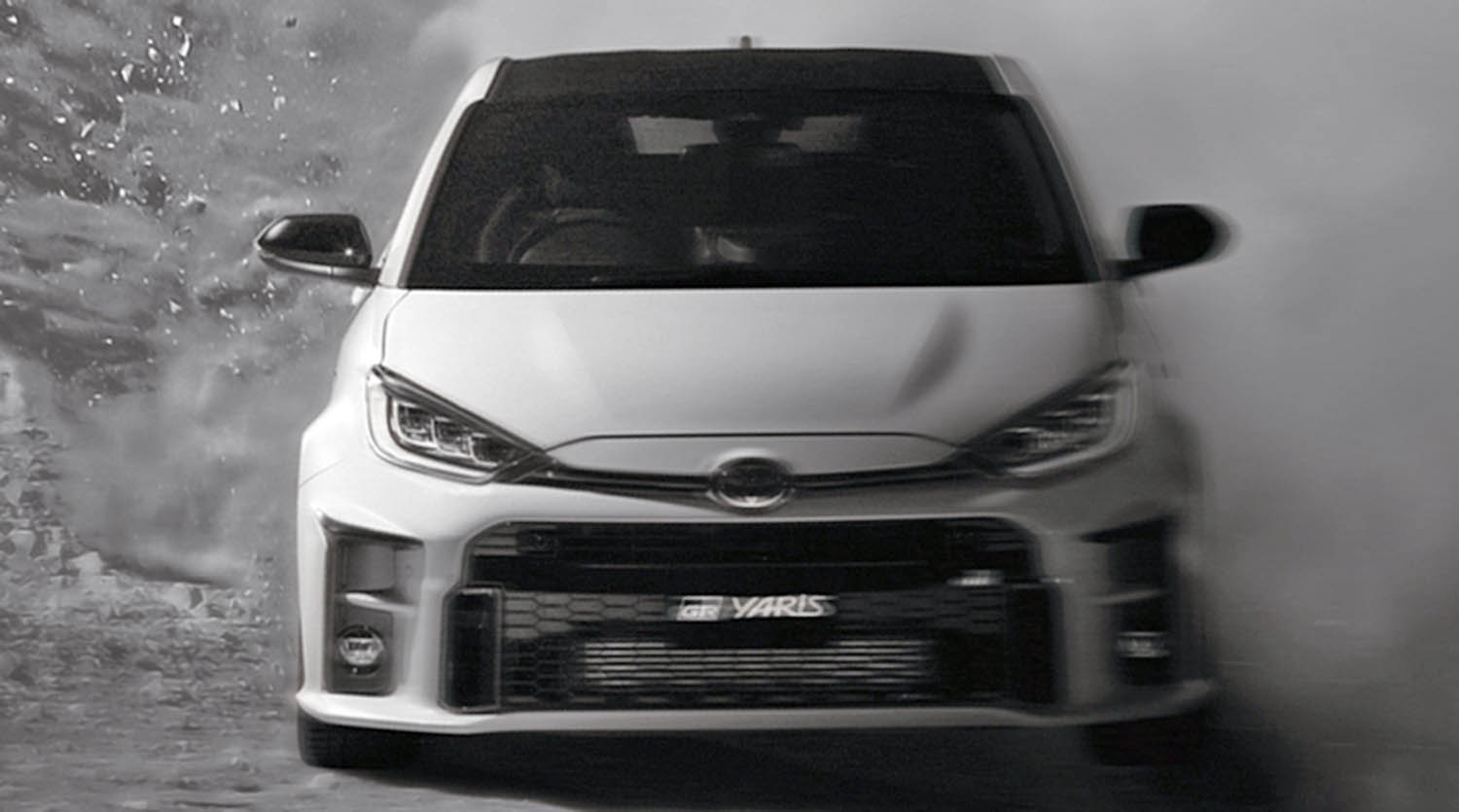
Toyota GR Yaris – Technical Specifications
- ENGINE
- Type: 3 in line cylinders
- Valve mechanism: DOHC 12-valve with VVTi
- Fuel system: D4S – Direct & indirect injection
- Supercharging: Turbo
- Displacement: 1.618 cm3
- Bore x stroke: 87.5 mm X 89.7 mm
- Compression ratio: 10.5:1
- power: 261hp/192kW
- torque: 360Nm
- Emissions level: Euro 6d Temp
- TRANSMISSION
- GR-FOUR 4WD system
- Type: Manual 6
- PERFORMANCE
- Power to weight ratio: 6.7kg/kW (4.9kg/DIN hp)
- speed: 230km/h (electronically limited)
- CHASSIS
- Front suspension: McPherson
- Rear suspension: Double Wishbone
- Steering: Rack & Pinion, Electric Power Steering
- turning circle: 10,8 m
- Brakes
- Front: Ventilated disc (356 mm) 4 pot fixed calliper
- Rear: Ventilated disc (297 mm) 2 pot fixed calliper
- Tyres: Dunlop SP Sport MAXX050Michelin Pilot Sport 4s 225/40 R 18
- EXTERIOR DIMENSIONS
- Overall length: 3.995 mm
- Overall width: 1.805 mm
- Overall height: 1.460 mm
- Wheelbase: 2.558 mm
- Front tread: 1.530 mm
- Rear tread: 1.560 mm
- WEIGHT
- Curb weight (without driver): 1.280 kg
